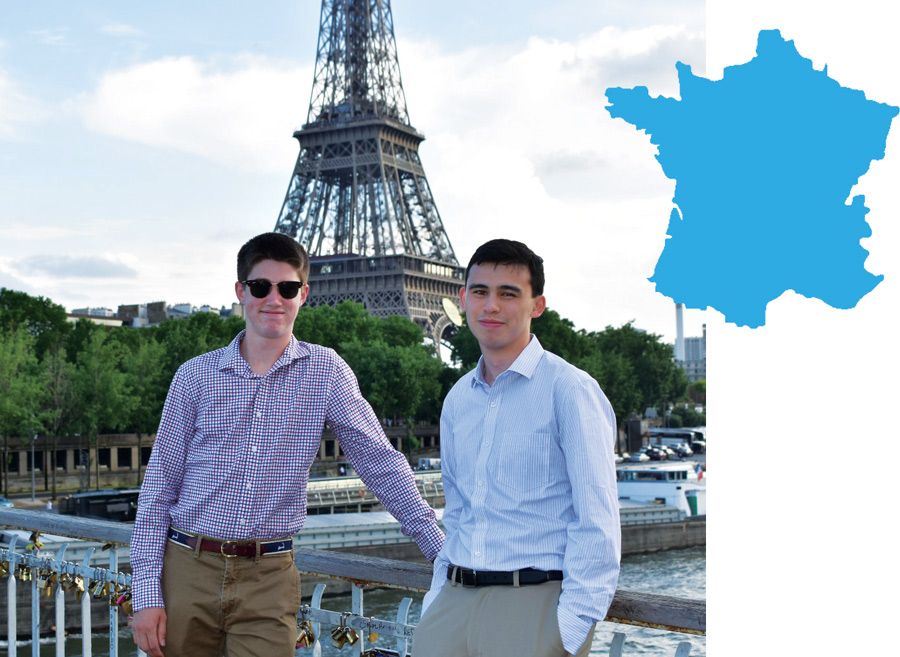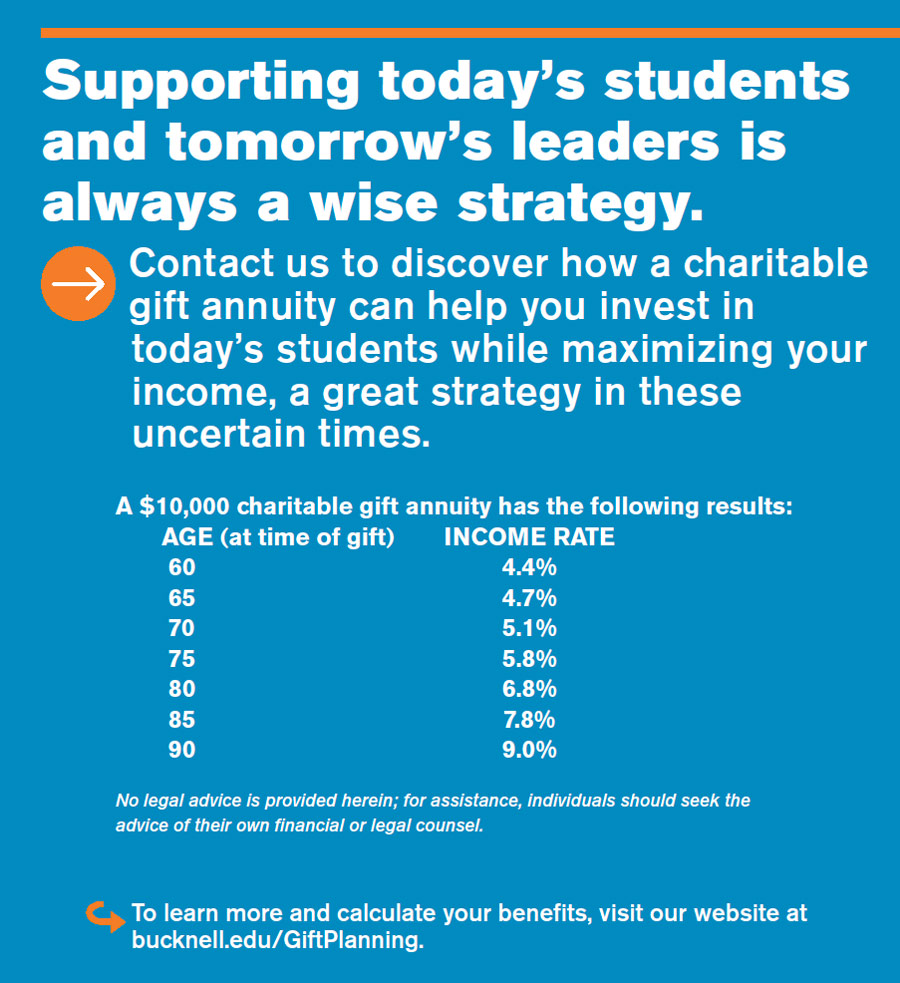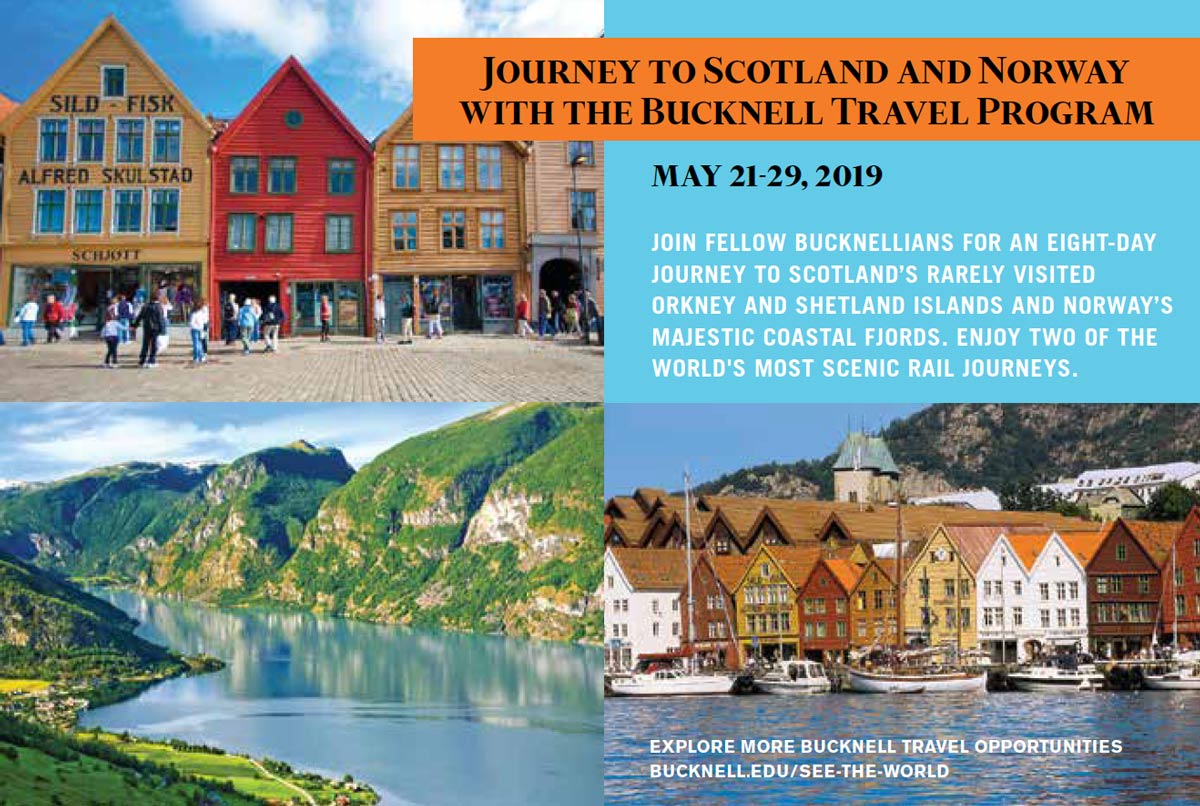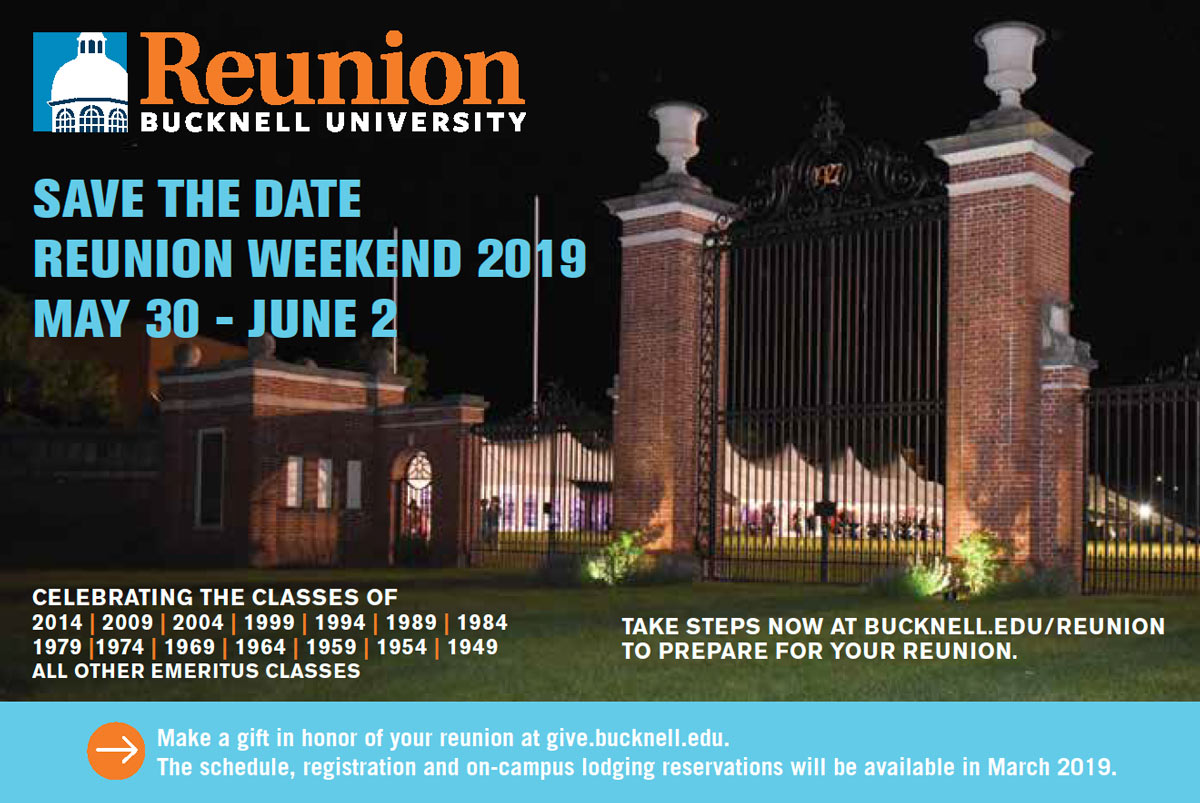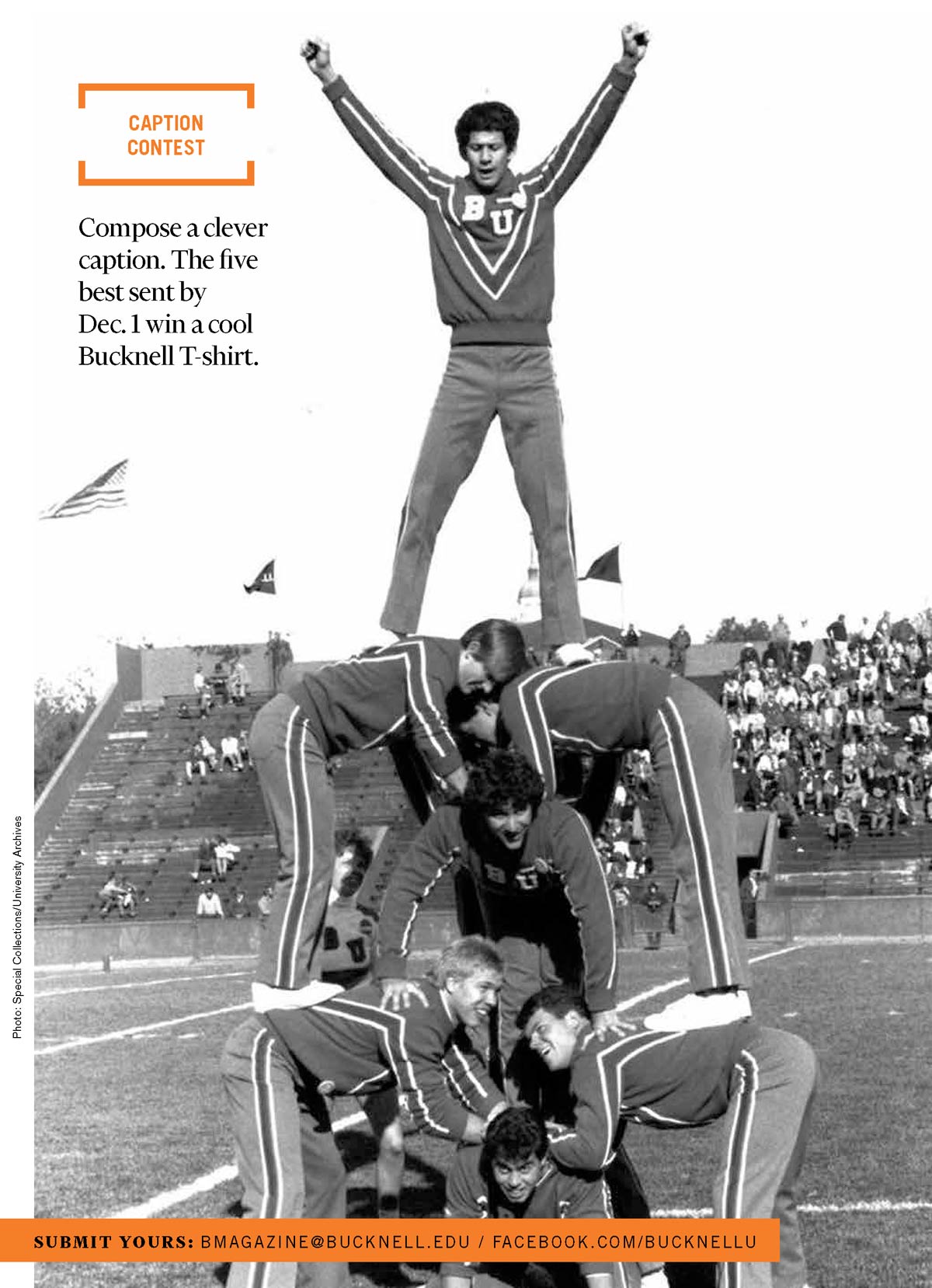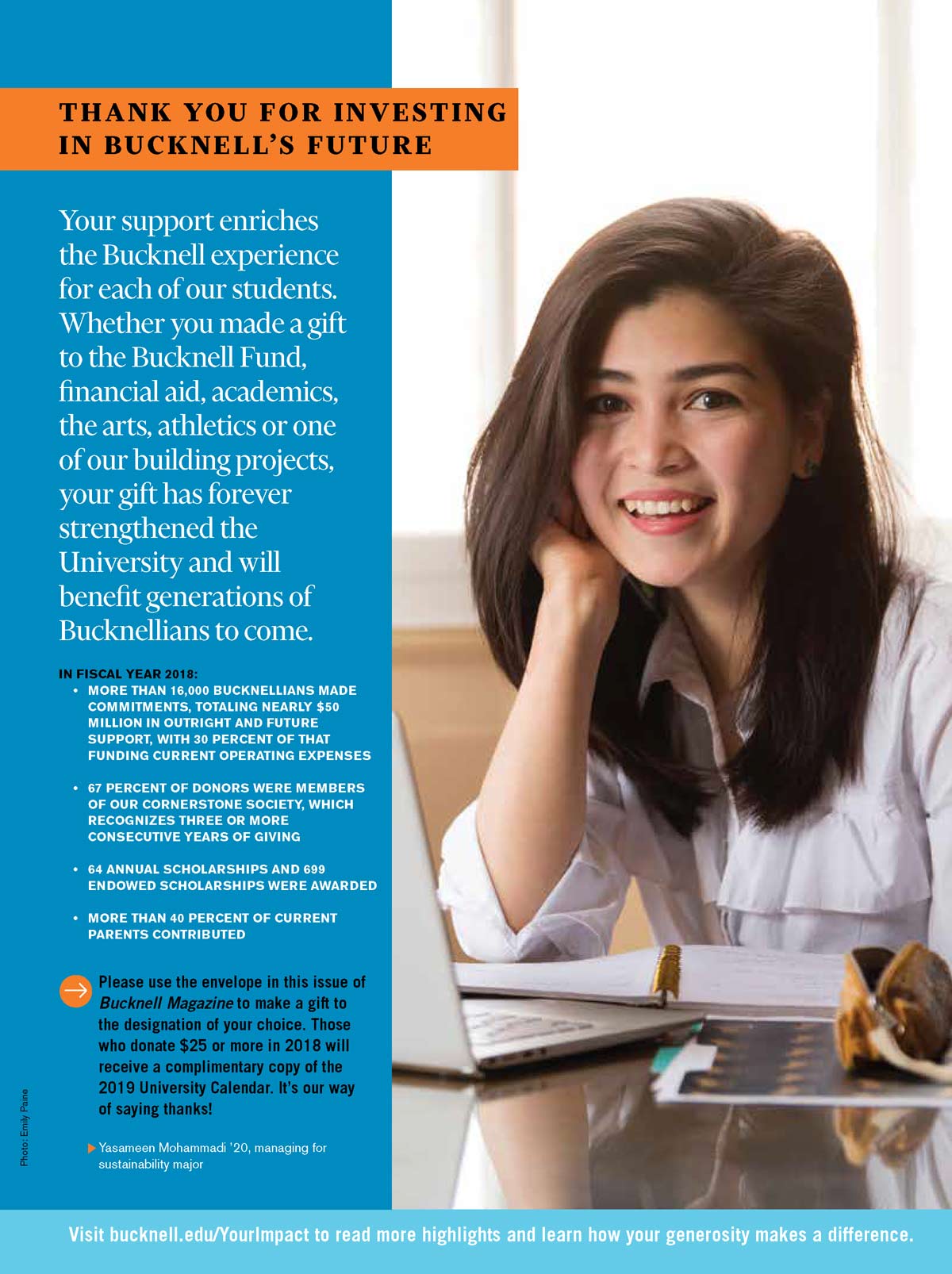The striking colors of autumnal leaves accent the loveliness of Malesardi Quadrangle.
The striking colors of autumnal leaves accent the loveliness of Malesardi Quadrangle.
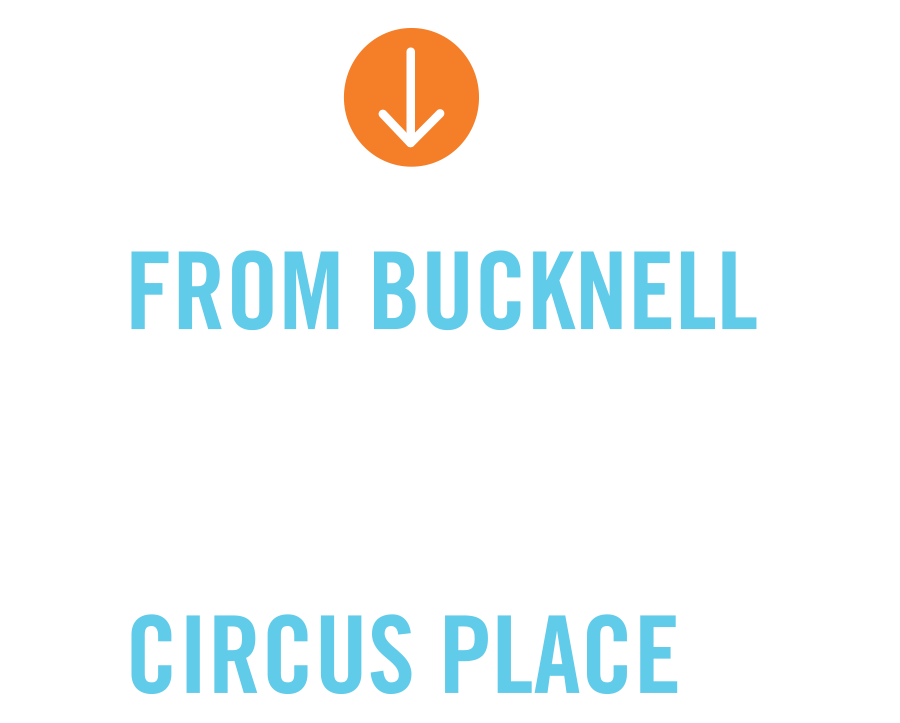
by Dave Allen ’06
Starting in high school, Matt Dranzik ’13 capered for children at Sesame Place, the Sesame Street theme park near his hometown of Huntingdon Valley, Pa. Though he entered Bucknell as a physics major, he quickly gravitated toward the stage: first acting in plays and musicals, and then exploring theatre’s ancient roots in a student-led production of Euripedes’ The Bacchae and an original performance titled Masks, Movement and Mayhem.
After graduate studies in physical theatre at Accademia dell’Arte in Arezzo, Italy, he lived what he calls “a nomad’s existence,” working temp jobs and teaching workshops in New York, Philadelphia and Colorado before the lure of a position at Circus Place, a circus school in Hillsborough, N.J., led him back East.
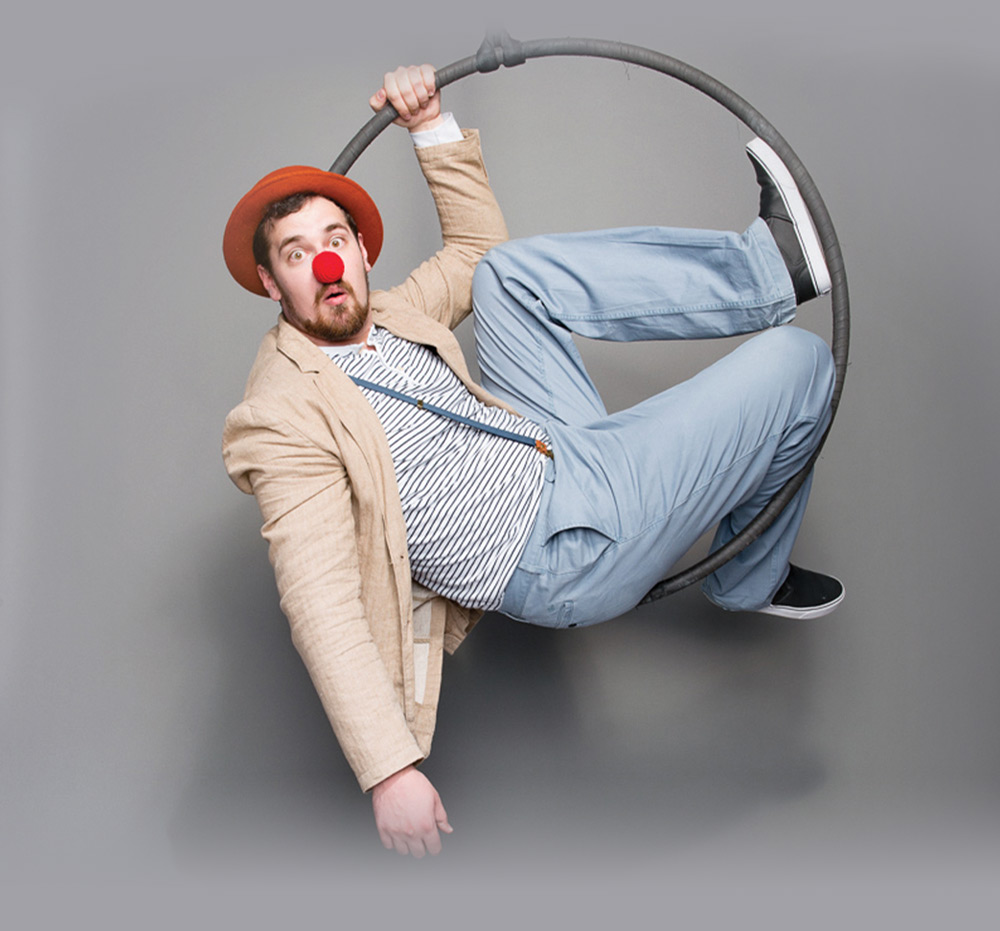

Starting in high school, Matt Dranzik ’13 capered for children at Sesame Place, the Sesame Street theme park near his hometown of Huntingdon Valley, Pa. Though he entered Bucknell as a physics major, he quickly gravitated toward the stage: first acting in plays and musicals, and then exploring theatre’s ancient roots in a student-led production of Euripedes’ The Bacchae and an original performance titled Masks, Movement and Mayhem.
After graduate studies in physical theatre at Accademia dell’Arte in Arezzo, Italy, he lived what he calls “a nomad’s existence,” working temp jobs and teaching workshops in New York, Philadelphia and Colorado before the lure of a position at Circus Place, a circus school in Hillsborough, N.J., led him back East.
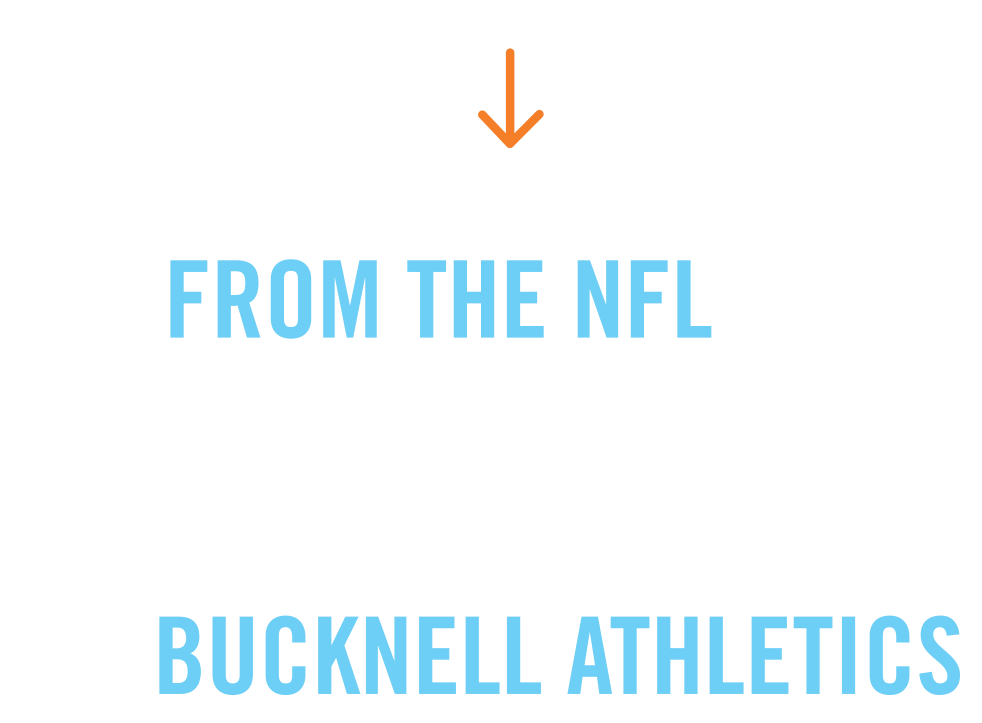
by Alexander Diegel
Jermaine Truax’s passion for sports began in his hometown of Elmira, N.Y., about two hours north of Lewisburg. After following a cross-country career trajectory, he’s enjoying a relative homecoming as Bucknell’s new director of athletics & recreation.
“Bucknell has a strong national reputation for both athletics and academics,” Truax says. “That’s what drew me here more than anything. This is the true student-athlete model.”
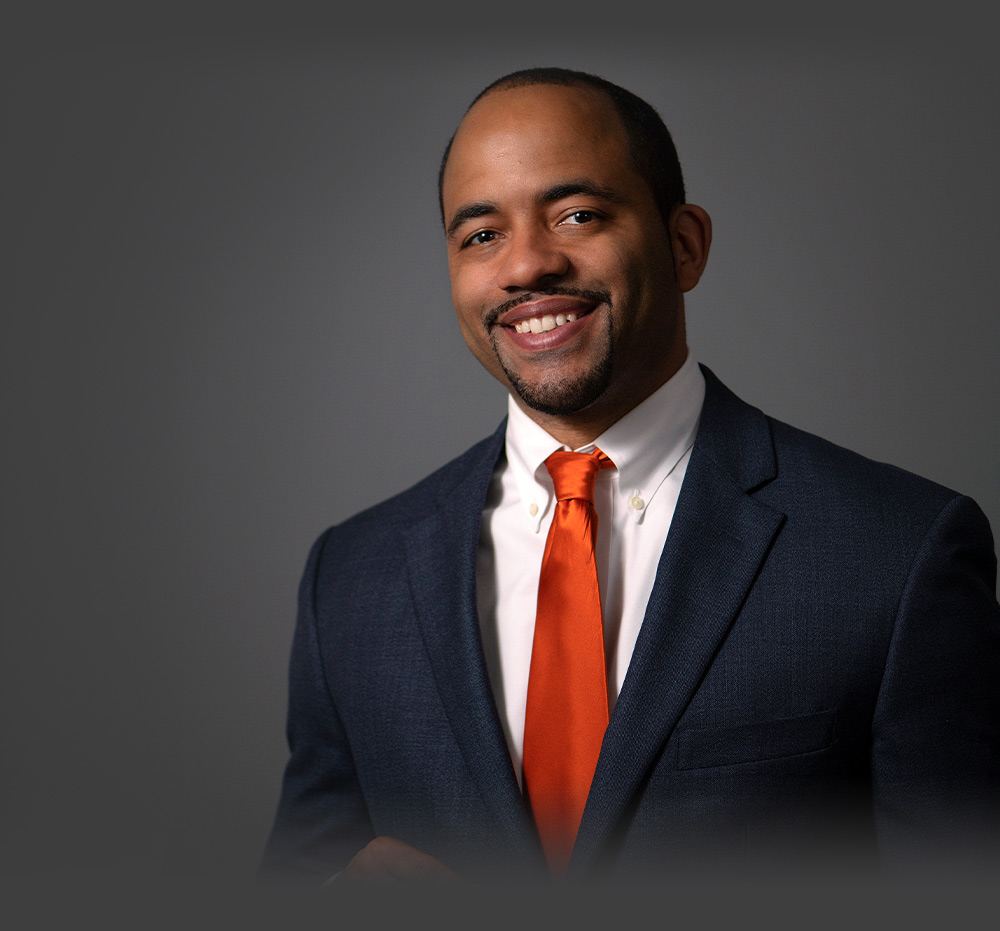

Jermaine Truax’s passion for sports began in his hometown of Elmira, N.Y., about two hours north of Lewisburg. After following a cross-country career trajectory, he’s enjoying a relative homecoming as Bucknell’s new director of athletics & recreation.
“Bucknell has a strong national reputation for both athletics and academics,” Truax says. “That’s what drew me here more than anything. This is the true student-athlete model.”
GLIMPSES OF THE PAST: “I so enjoyed the article on Norman Weber ’54 in the summer issue. The photos were amazing, and the story resonated with me, as I too aimed to capture many iconic Bucknell images when I was the photography editor of the yearbook and a photographer for The Bucknellian and other publications including Bucknell Magazine. It’s always a great time looking back on the photos.”
Los Angeles
Morristown, N.J.
We were not surprised at all to see Steven Kohn ’81 highlighted in the “Career Clusters” article in Bucknell Magazine. After all, if it weren’t for him, Robert would not have the amazing career in architecture that he has today. As an economics major at Bucknell, Robert was living in New York City trying to figure out if a career in architecture was even possible. We traveled back to Lewisburg one weekend with a few friends and met Steve at a local bar. A friendly, gregarious sort to say the least, Steve immediately suggested that Robert contact his father, Gene, an architect in New York. Robert did, worked at Kohn Pedersen Fox for two fantastic years, applied to graduate school at Yale, and the rest is history. Now the principal and director of design at Bostwick Design Partnership in Cleveland and a member of the College of Fellows in the AIA, Robert has Steve to thank.
Robert Lewis Bostwick ’78
Cleveland
Thank you for the article on Katherine Owens Hayden ’23, Bucknell’s first female chemical engineer. I am indebted to Hayden for paving the way for us female engineers at Bucknell and beyond!
In your article, you stated that “[Hayden] did not get the opportunity to use her degree.” I can assure you that as she was “embracing her domestic life,” raising her children and supporting her husband, she used her degree every day. Bucknell engineering graduates learn effective ways to think and behave. We are taught to always be inquisitive, find and apply the best solution, multitask, prioritize, plan, problem-solve and so much more. Any wife and mother will tell you that we apply these skills in our lives every day. Since Hayden lived to be 99, I bet she did an excellent job of engineering her way through her very long and productive life!
St. Johns, Fla.
While celebrating 125 years of engineering, Dean Pat Mather gives primary stress not to the many good students and professors, but to the first female graduate and how the school ranks 13th in its percentage of women. The supplement mentions “calls to narrow the gender gap,” how engineering is “male-dominated” and how Bucknell is “battling this trend” to achieve more “gender parity.”
But women have been encouraged to be engineers for decades. And women dominate psychology, biology and education. Is the school “battling” that too? Women constitute the majority of students now and face no barrier to admission in engineering. So why assume they do? If they got preferential treatment, that would be worth battling. But the dean wants to put his thumb on the scales and will be “doubling down on our efforts to foster a diverse and inclusive environment.” That’s the new euphemism for discrimination by gender and race. Why do administrators suddenly promote the very discrimination once called so unfair?
A lack of parity due to gender preferences or aptitudes, as in professional chess, is not the same as a lack of parity due to unfair discrimination. Sweden confirmed this after attempts at gender parity, which left women still choosing nursing over engineering.
The administration is caving to political correctness to appear caring while everyone loses but them – the women given unfair advantages and greater pressures, the men denied equal standards of admission, the teachers denied the best students and society denied the best graduates.
We should be debunking political correctness not doubling down on it. A bridge doesn’t care about the gender of its designer, nor does gravity. If nature can’t be fooled, as Richard Feynman said, why are we fooling ourselves with an obsessive focus on something irrelevant to engineering?
Salem, Mass.
I just got the summer edition of Bucknell Magazine. What a magnificent job you have done! It’s beautifully laid out, and all the content has interest — what an incredible effort. I just want you to know that it is appreciated.
Canyon Lake, Texas
Bucknell has joined the political conversation.
Illustration by Nancy Harrison.

Volume 11, Issue 4
Andy Hirsch
Editor
Sherri Kimmel
Design
Amy Wells
Associate Editor
Matt Hughes
class notes editor
Heidi Hormel
Mike Ferlazzo
Brad Tufts
Heather Johns
Emily Paine
Editorial Assistants
Shana Ebright
Haley Mullen ’19
Kathryn Nicolai ’20
Julia Stevens ’20
Website
bucknell.edu/bmagazine
Contact
Email: bmagazine@bucknell.edu
Class Notes:
classnotes@bucknell.edu
Telephone: 570-577-3611
(ISSN 1044-7563), of which this is volume 11, number 4, is published in winter, spring, summer and fall by Bucknell University, One Dent Drive, Lewisburg, PA 17837. Periodicals Postage paid at Lewisburg, PA and additional mailing offices.
Permit No. 068-880.
Circulation
57,000
Postmaster
Send all address changes to:
Office of Records,
301 Market St., Suite 2
Bucknell University, Lewisburg, PA 17837
© 2018 Bucknell University
Please recycle after use.

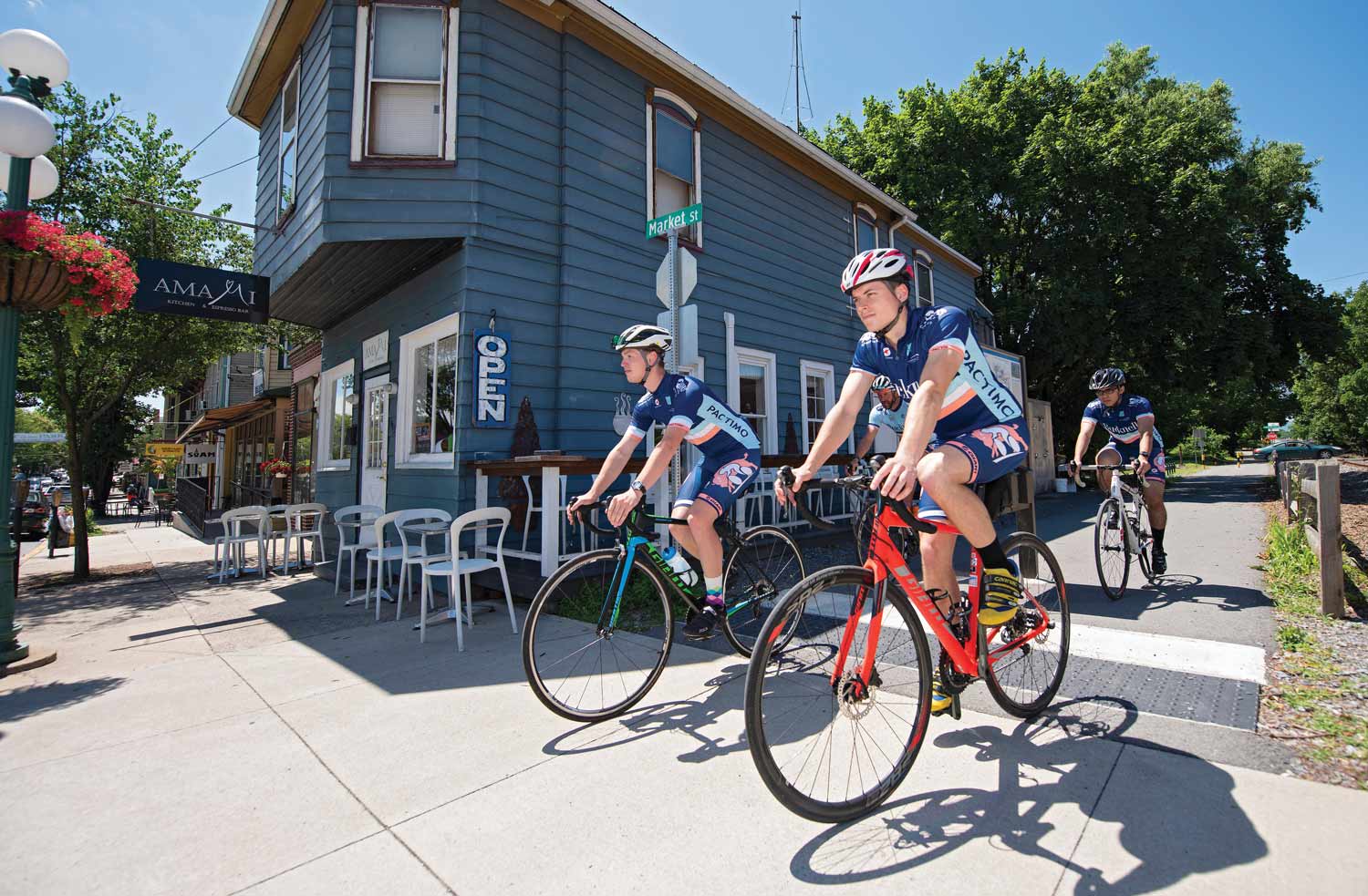
The borough in May received a $1 million grant from the Pennsylvania Department of Transportation that will help extend the rail trail and support beautification around Bull Run Creek. Opened in 2011, the bike and walking trail rambles through 9.5 miles of idyllic countryside, passing the occasional farm market and ice cream stand on the way to the neighboring town of Mifflinburg. A 2015 extension project brought it across state Route 15 and into Lewisburg’s downtown, where it currently terminates at Market Street between Fifth and Sixth streets. The new extension will deliver trail users to Bucknell’s doorstep on Sixth Street near Vedder Hall.
 Paris, France
Paris, FranceMay marked the 50th anniversary of the student revolt and protests that rocked France. The protests led to a strike carried out by nearly a quarter of the working population, economic instability and political turbulence that caused then-president Charles de Gaulle to briefly flee Paris. Richard Noel ’20 and Cameron Wade ’20 spent a week in Paris this summer visiting libraries and archives to study the events of May 1968 as part of their ongoing research project, supported in part by a Humanities Center High-Impact Student Research grant.
What They Did:
“The project has evolved into a study about the relationship between de Gaulle’s political philosophy and that of the postwar French intellectuals,” says Noel, an interdisciplinary studies in economics and math major. Wade, a history and French major, insists that “the [protest] movement was a product of philosophical theories as much as it was derived from its historical context. If we did not approach this project from an interdisciplinary perspective, we would be missing a part of the story.”
 Central Susquehanna Valley Transportation Project bridge, Winfield, Pa.
Central Susquehanna Valley Transportation Project bridge, Winfield, Pa.
It’s 1 a.m. on a balmy summer evening, and Tyler Keiser ’20 is at work 180 feet above the Susquehanna Valley. The civil engineering and management major from Elysburg, Pa., watches closely as builders pour concrete into a wood and steel frame, creating a cap atop the tallest support column of what will become the loftiest automobile bridge in central Pennsylvania. The night’s so clear that when he looks up, he can see the lights of the Bucknell campus shining four miles away.
What He Did:
Keiser spent his second summer interning with Trumbull Construction, the general construction contractor for the new 4,545 foot span over the Susquehanna River — part of the Central Susquehanna Valley Transportation Project that was decades in the making. His duties included ensuring that the 60,000 cubic yards of concrete supporting the roadway were poured correctly and in compliance with Pennsylvania Department of Transportation regulations.
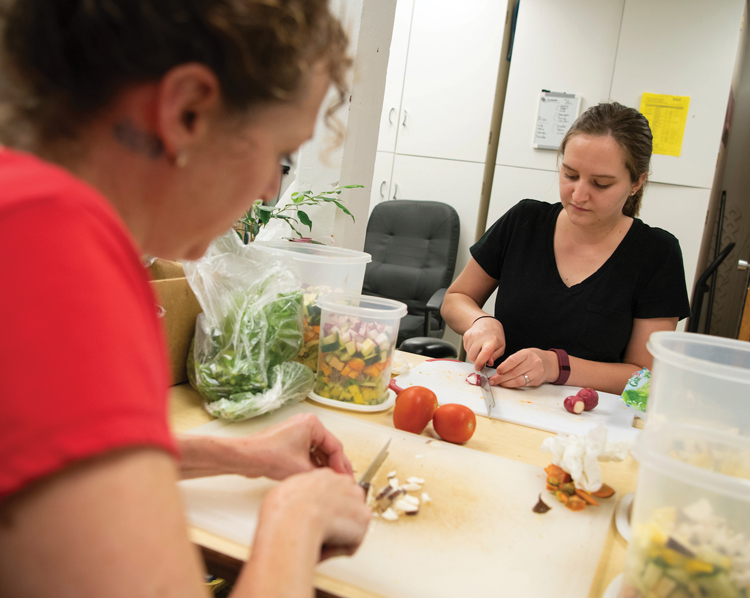
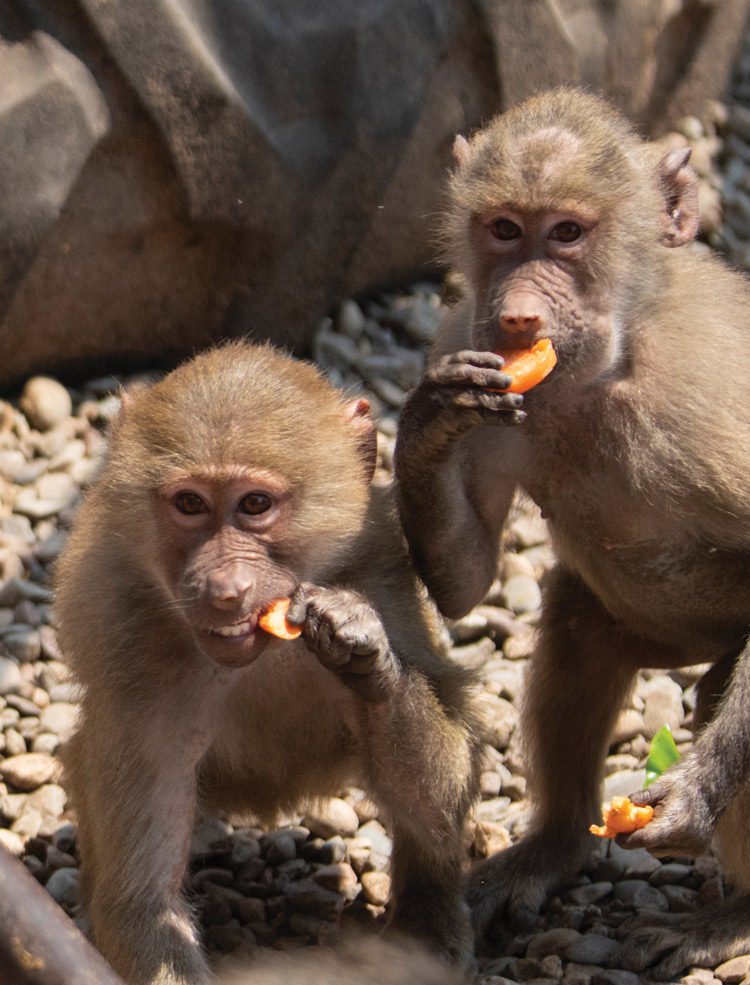
Beginning last fall, in an effort to bolster sustainability at Bucknell, the University’s dining vendor has donated excess food to Bucknell’s Animal Behavior Program, which uses it to supplement the diets of the roughly 50 primates housed on campus.
The donated items are not leftovers or spoiled food but rather fruit and vegetable cuttings that have never left the kitchen and would otherwise be thrown away — onion and carrot tops, celery hearts and broccoli stems, for instance.
If public service is your calling, we want to hear from you. In 400 words or fewer, tell us how your Bucknell education prepared you for a life in public service. If you have a related photo, please send that, too, by Dec. 15. Email us at bmagazine@bucknell.edu or mail to Bucknell Magazine, One Dent Drive, Lewisburg, PA 17837. Our spring issue will feature a selection of our readers’ most compelling responses.
Robert Chrencik ’73 is president and CEO of the University of Maryland Medical System (UMMS), a 14-hospital health-care system spanning the state of Maryland. Chrencik, who graduated from Bucknell with a degree in finance and accounting, is a CPA who was previously the CFO at UMMS as well as a senior manager in health-care consulting at KPMG. A regular attendee of Bucknell’s Scholarship Day, he was a speaker at the event in 2011.
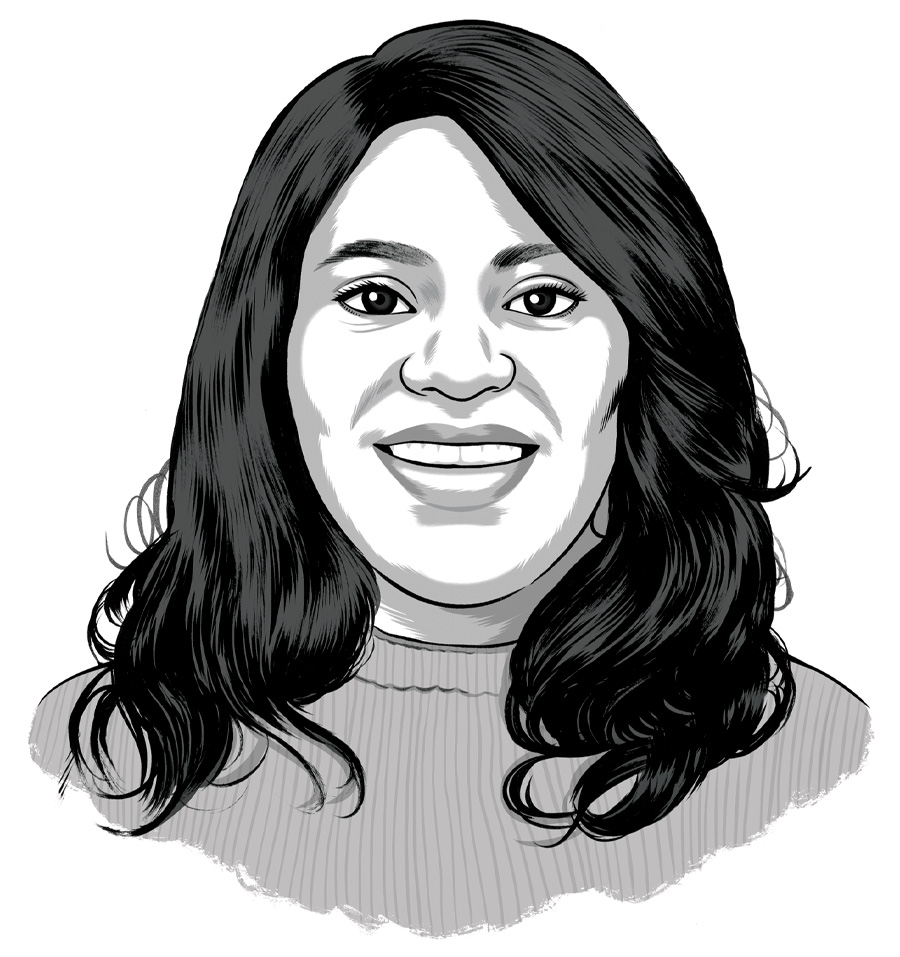

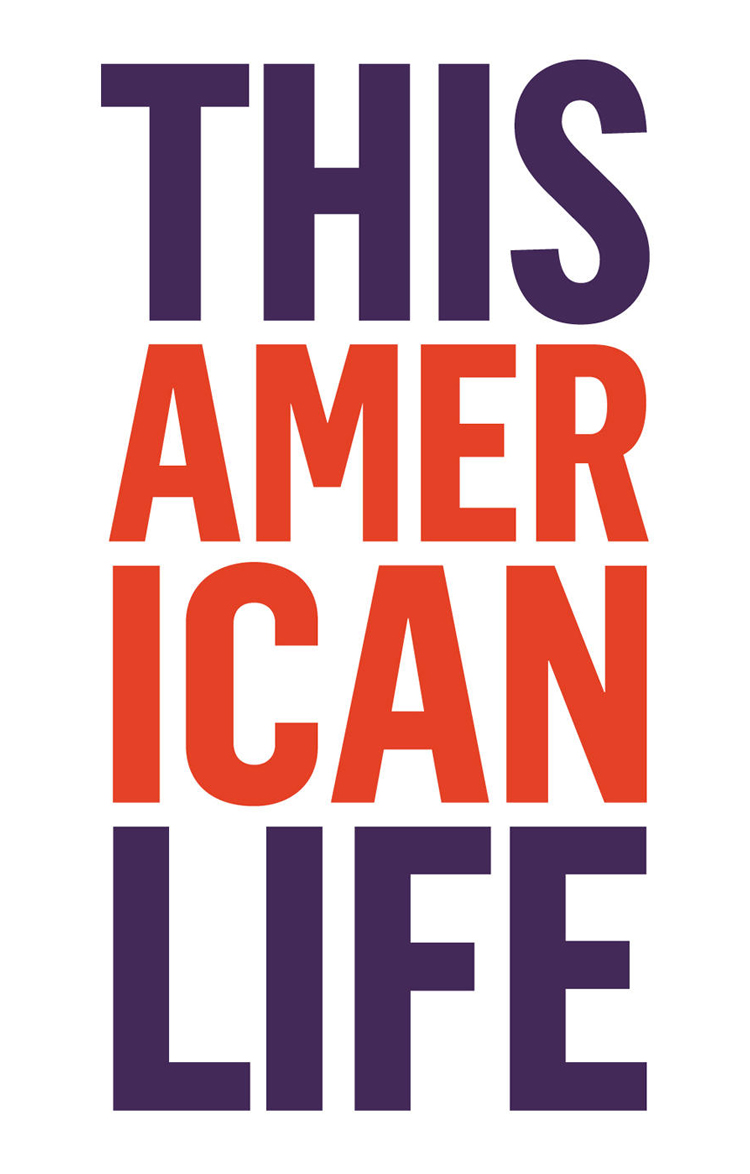








b. Dre Johnson (Anthony Anderson, Black-ish)
c. Jim Anderson (Robert Young, Father Knows Best)
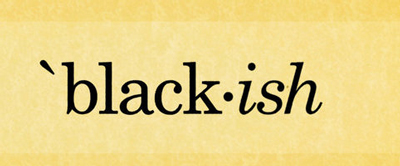

b. Keeping a child occupied
c. Staying indoors a lot
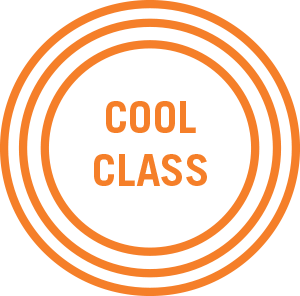
Photo: Emily Paine

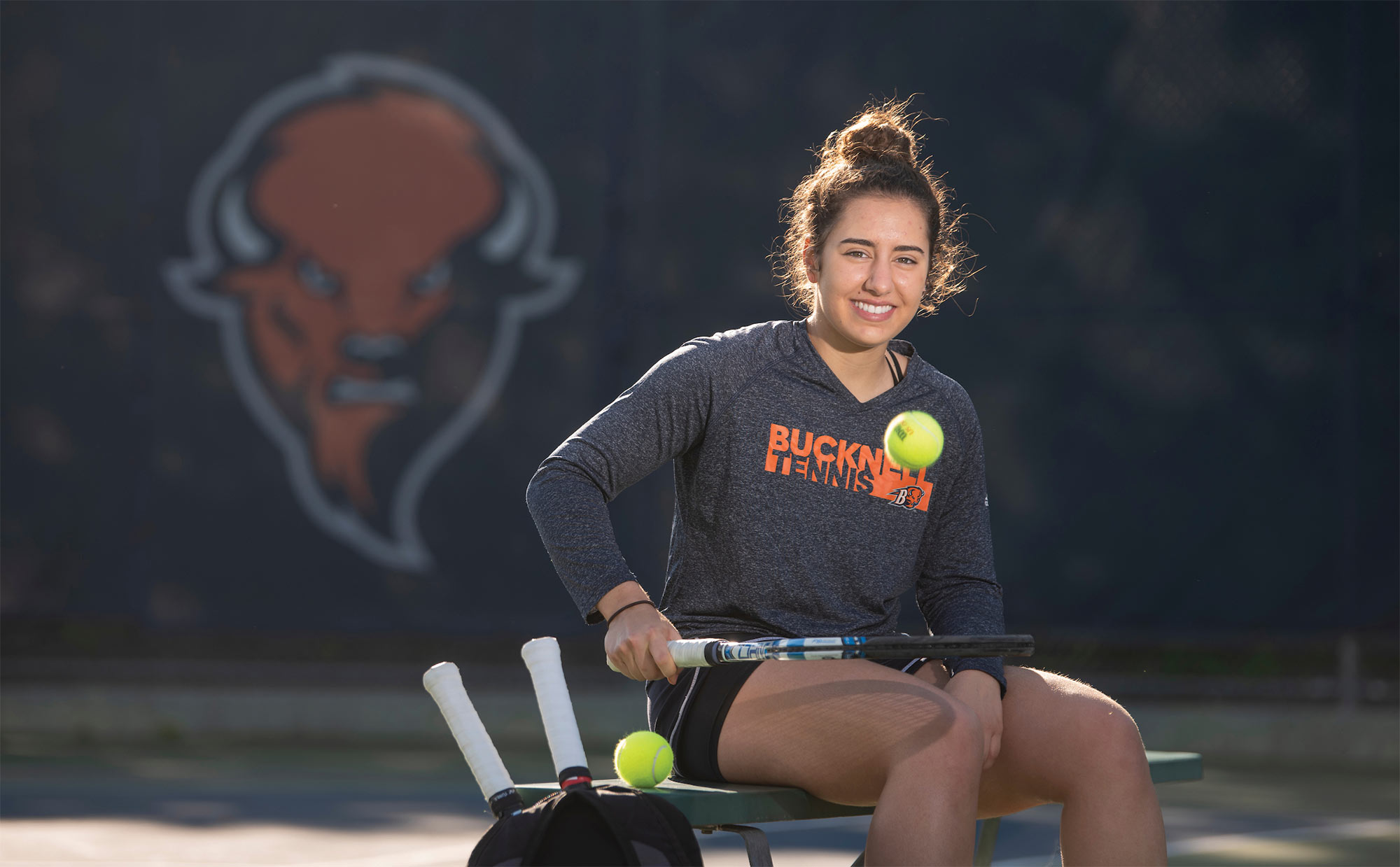
Besides being a passionate player, she is also a skilled one. Before coming to Bucknell, Ayuso was the second-ranked junior tennis player in her home country of Venezuela. Since Venezuelan schools do not typically have tennis teams, Ayuso was an army of one. After a year of playing at Bucknell, she has shifted from being self-focused to team-oriented. This new mentality is reflected in the fact that she is no longer aware of her personal ranking. Her focus is on her teammates.

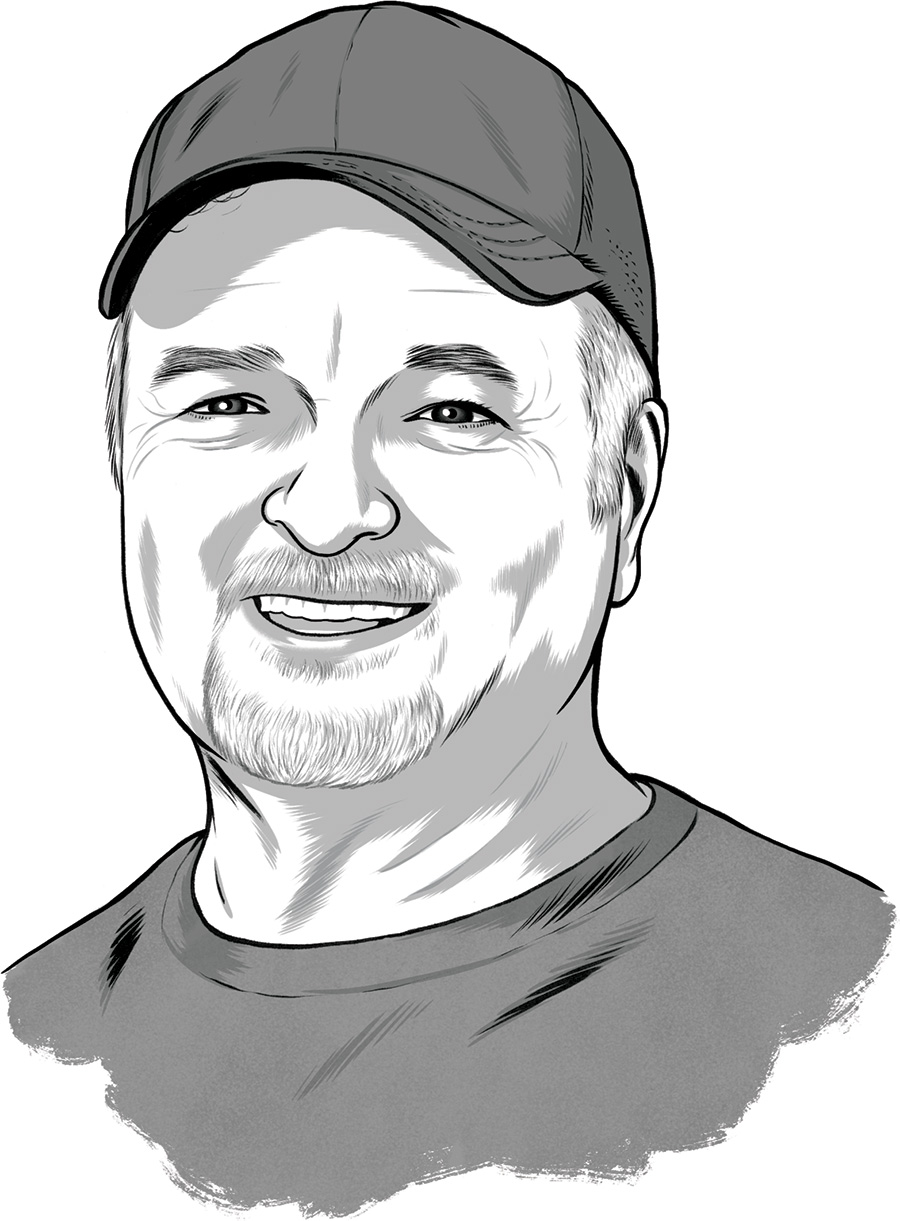
 For 34 years fleet supervisor Rex Cutchall has been keeping the wheels turning on Bucknell’s now 186 cars, trucks, vans and Gator utility vehicles. Cutchall, a recipient this spring of the John F. Zeller Memorial Award for support staff excellence, shares tips on changing flats and other tire care.
For 34 years fleet supervisor Rex Cutchall has been keeping the wheels turning on Bucknell’s now 186 cars, trucks, vans and Gator utility vehicles. Cutchall, a recipient this spring of the John F. Zeller Memorial Award for support staff excellence, shares tips on changing flats and other tire care.ix years ago, Bucknell planted a seed. That seed became a garden. And soon, it will grow into a farm.
This summer the University began construction on a 5-acre campus farm on a grass-covered hilltop above the recently opened South Campus Apartments, providing fertile ground for academic connections, sustainable food production, student life and wellness, and community engagement.
The Bucknell faculty and staff behind the project describe it as a natural extension of the Lewisburg Community Garden in downtown Lewisburg, a collaboration between the University and the borough begun in 2012 to address local food insecurity. In 2017, the garden donated 3,800 pounds of produce with a market value of more than $10,000 and provided ample opportunities for student projects and service-learning.
“We think of these programs as being complementary — their missions are not identical, but they are congruent,” says Kyle Bray, assistant director of service learning and one of the farm project’s leaders. “As the garden has begun to fill more roles and provide more services, we’ve realized there are things the garden can’t achieve — but a larger, on-campus space can.”

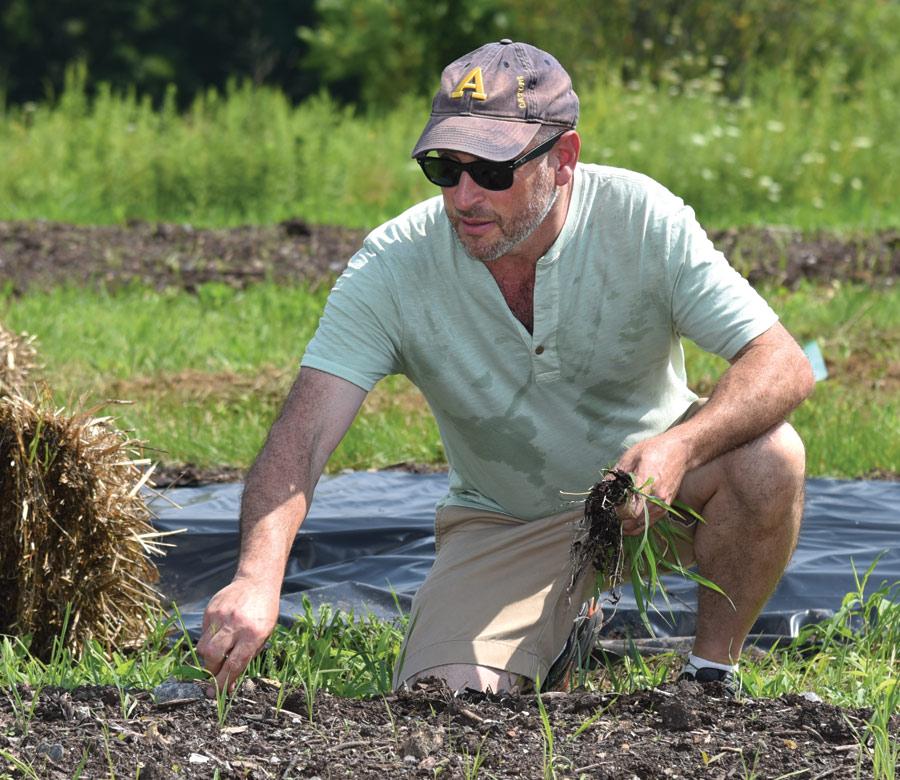

Above, bottom: Mark Spiro pulls weeds from a test bed at the campus farm.
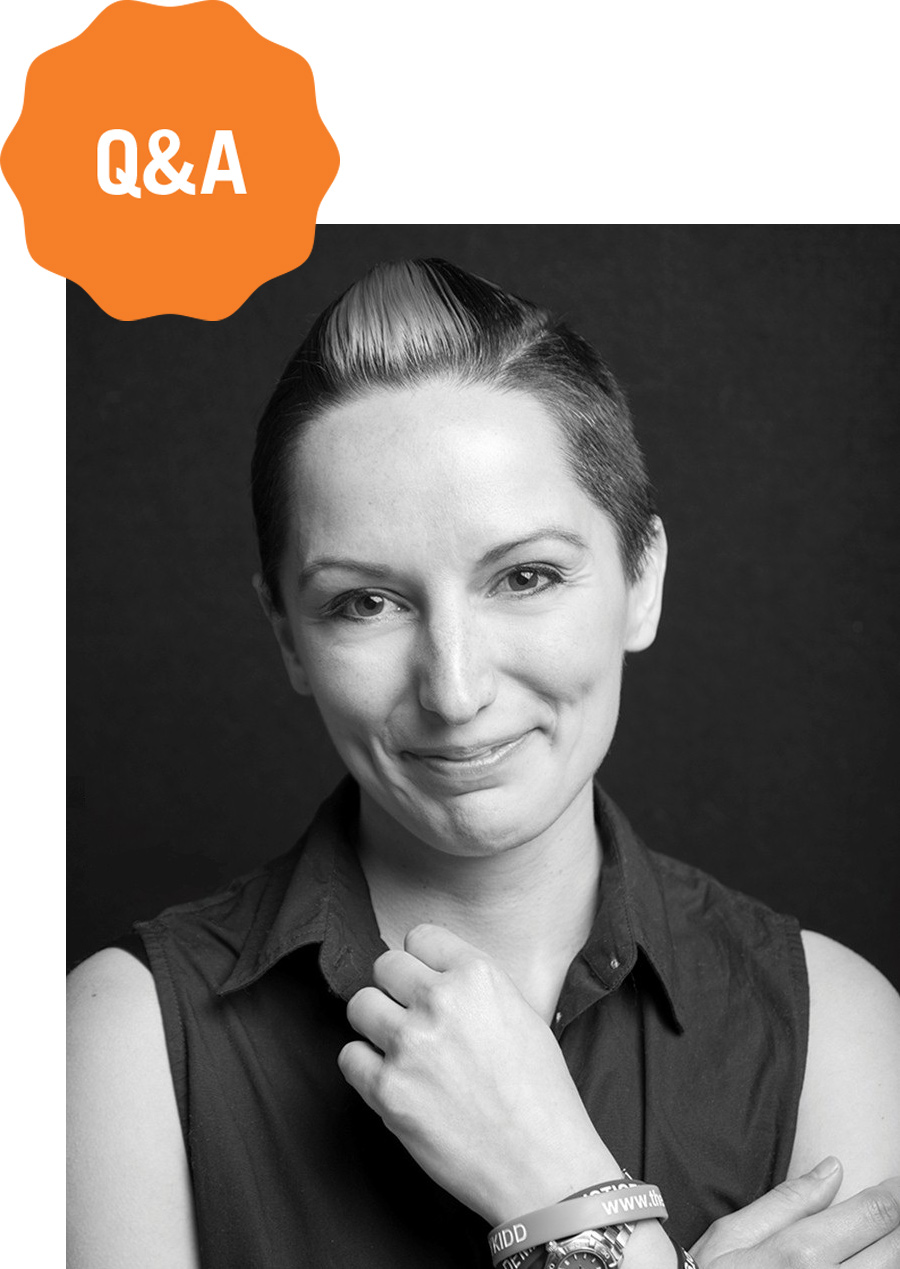
Voters’
Voices
illustrations by Nancy Harrison
mmigration, escalating international trade disputes, a wave of women candidates energized by the #MeToo movement — these are just a few of the reasons the 2018 mid-term election is attracting unusually intense attention.
What do Americans think about some of these controversies? Have attitudes toward immigrants improved or gotten worse since Donald Trump was elected president? Does where people live make a difference in how they feel about protectionism vs. free trade? Do Americans feel that the #MeToo movement has gone too far, causing unanticipated problems in the workplace?
Bucknell’s Survey Research Laboratory has answers to those questions — and more. The lab, led by Professor Chris Ellis ’00, political science, is part of the Bucknell Institute for Public Policy (BIPP). Several times a year, the lab enables Bucknell researchers — faculty and, sometimes, students — to pose questions in a national opinion survey. The results include demographic data that help produce insights into how Americans’ views vary by political party, age, economic status and other factors.
“We want to get away from ‘Who are you voting for?’ polls and delve into more substantive stuff,” Ellis says. “We’re not after snap opinions.”

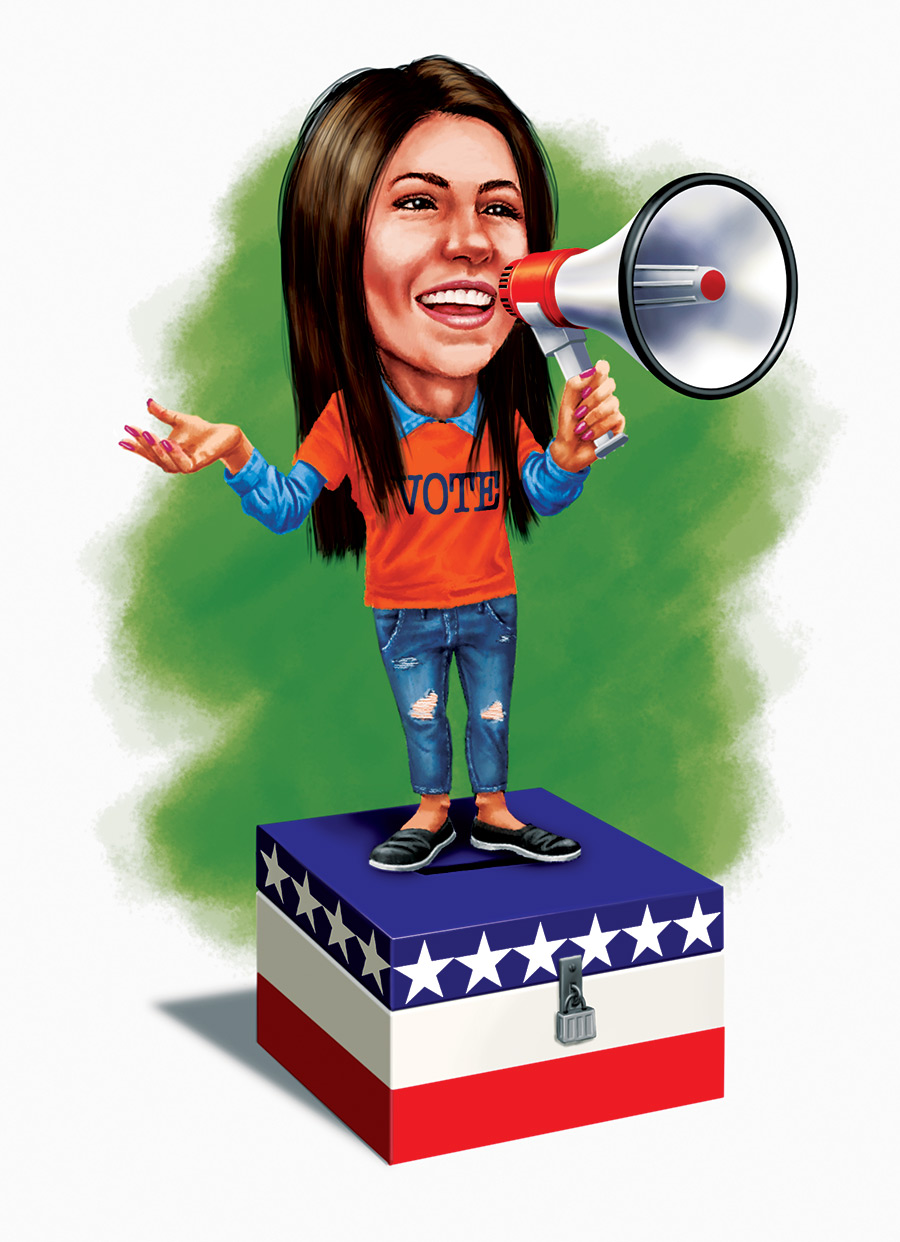
Voting isn’t just for political nerds. Elections like the one coming this fall will decide things that you care about and affect your everyday lives.
This semester, the two seniors are hard at work spreading that message on campus, thanks to their selection as Mauch Fellows. Funded by former Lewisburg residents James and Rebecca Mauch and administered through the League of Women Voters chapter in Union County, the fellowships promote student engagement in politics and help Bucknell students get the information they need to be informed voters.
Interest in politics at Bucknell has spiked since the 2016 election, Gray says, but some students are still disaffected or tuned out. With so much gridlock and fighting, she says, the world of politics and elections “seems like an empty road of red tape, where everybody yells and nothing ever gets done.”
“Getting people to care is the first step,” Zuk says.
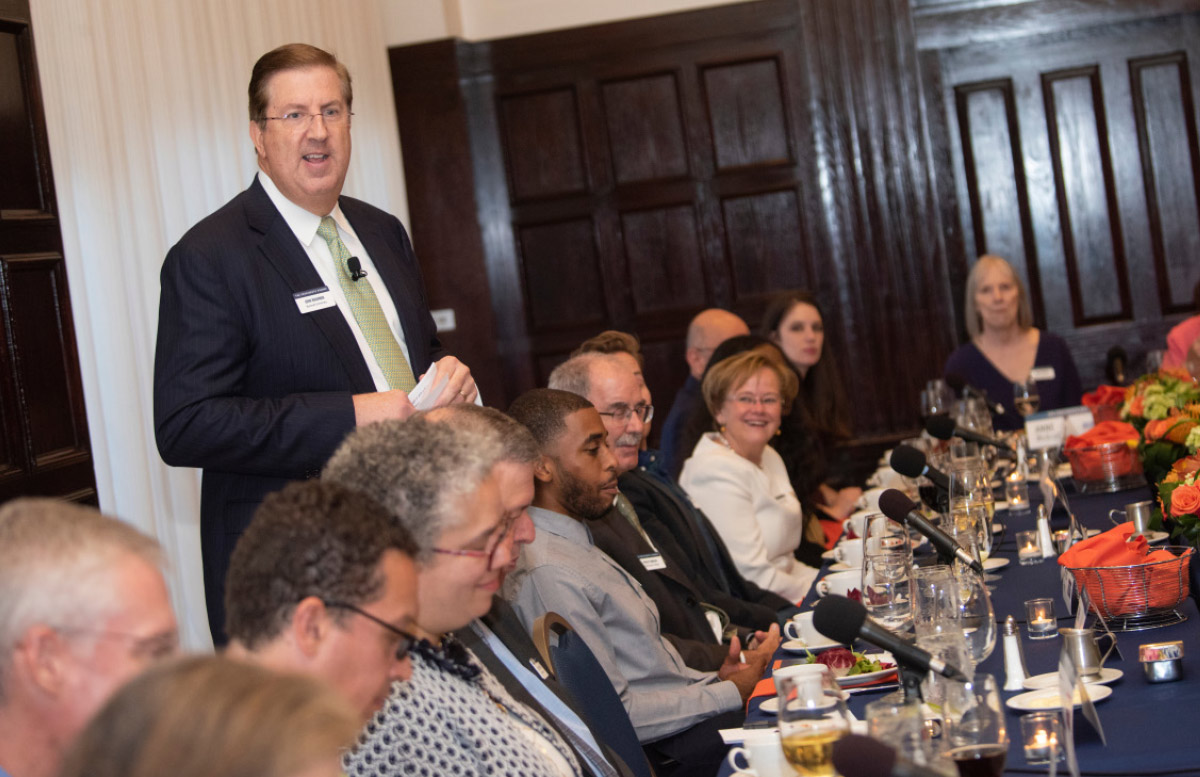
From admissions affirmative-action policies, to why there’s a perceived lack of intellectual diversity on campus, to new Title IX guidelines, to why college costs so much, the questions were as sharp and incisive as you’d expect from the likes of The New York Times, NPR and The Chronicle of Higher Education, and the answers as wide-ranging and diverse as the participating colleges and universities.
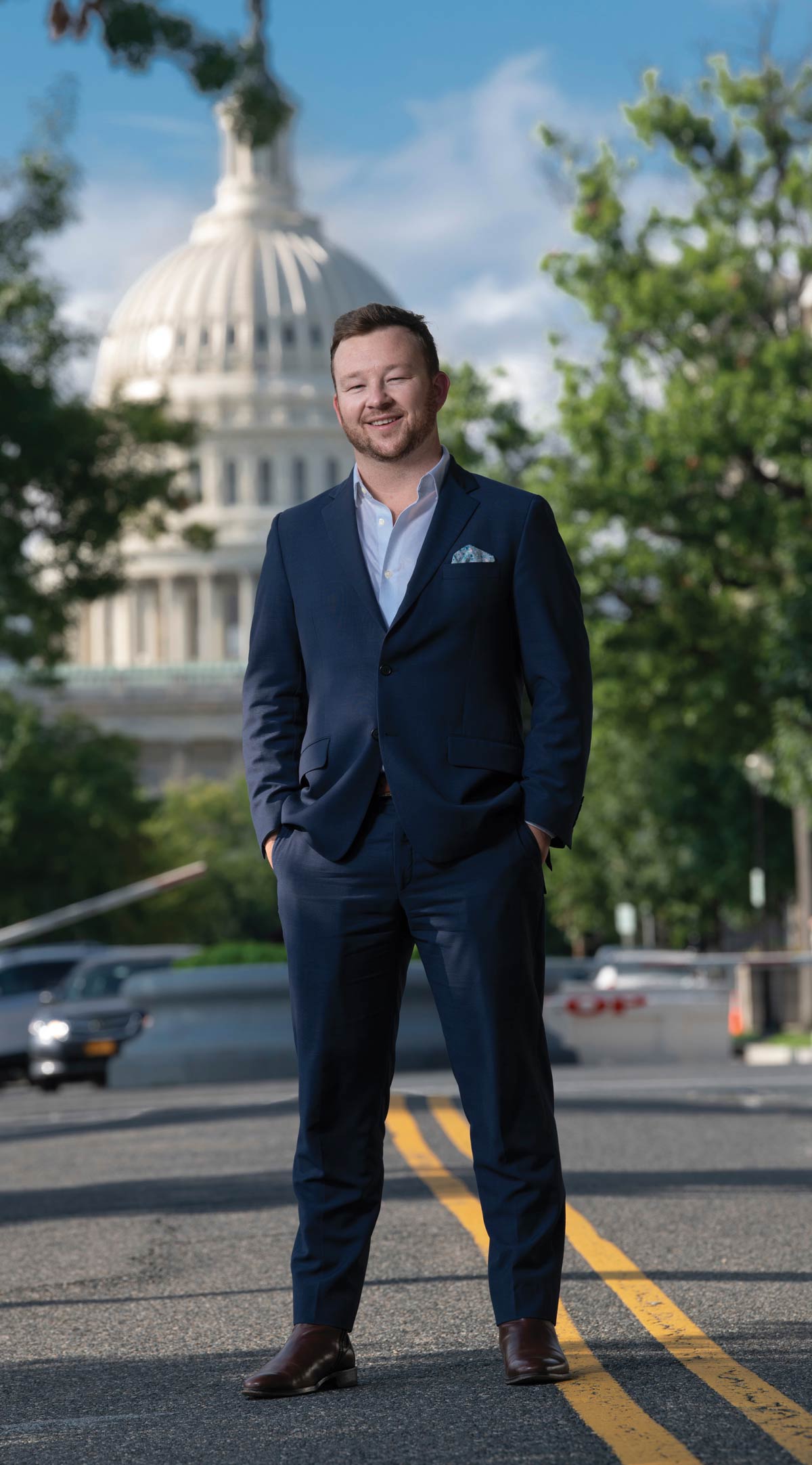
“This is where the fight is,” says Law. “I couldn’t have a better position right now. There’s no thrill like politics. It’s high intensity, high adrenaline, high competition.”
Reporters around the country have his cell-phone number. His name regularly appears in newspapers and on radio and TV. But what’s most important, Law says, is the opportunity to fight for the issues he cares about.
“It was this really perfect mesh of the two interests,” Byrd says. Her path to the job started at a Bucknell Institute of Public Policy event in the nation’s capital, where she met a client of the firm.
After interning in the city through the Bucknell in Washington, D.C., program, Byrd was all in. “I loved being here,” she says.
Byrd’s interest in politics started early. Her parents were “pretty political” and encouraged discussion of local, state and national affairs at the family dinner table. By middle school, she was eager to learn what she could about government and politics, and she just kept going through high school and into her studies at Bucknell.
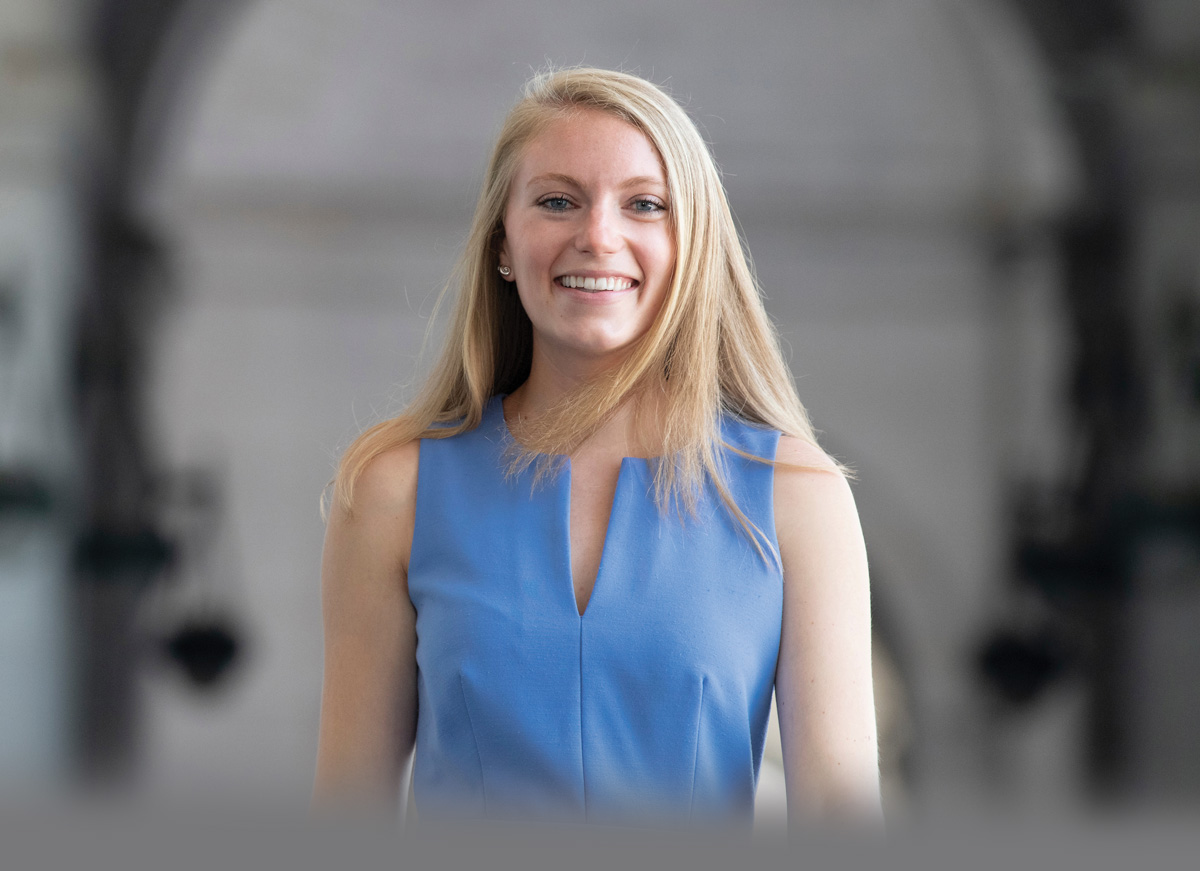
“It was this really perfect mesh of the two interests,” Byrd says. Her path to the job started at a Bucknell Institute of Public Policy event in the nation’s capital, where she met a client of the firm.
After interning in the city through the Bucknell in Washington, D.C., program, Byrd was all in. “I loved being here,” she says.
Byrd’s interest in politics started early. Her parents were “pretty political” and encouraged discussion of local, state and national affairs at the family dinner table. By middle school, she was eager to learn what she could about government and politics, and she just kept going through high school and into her studies at Bucknell.
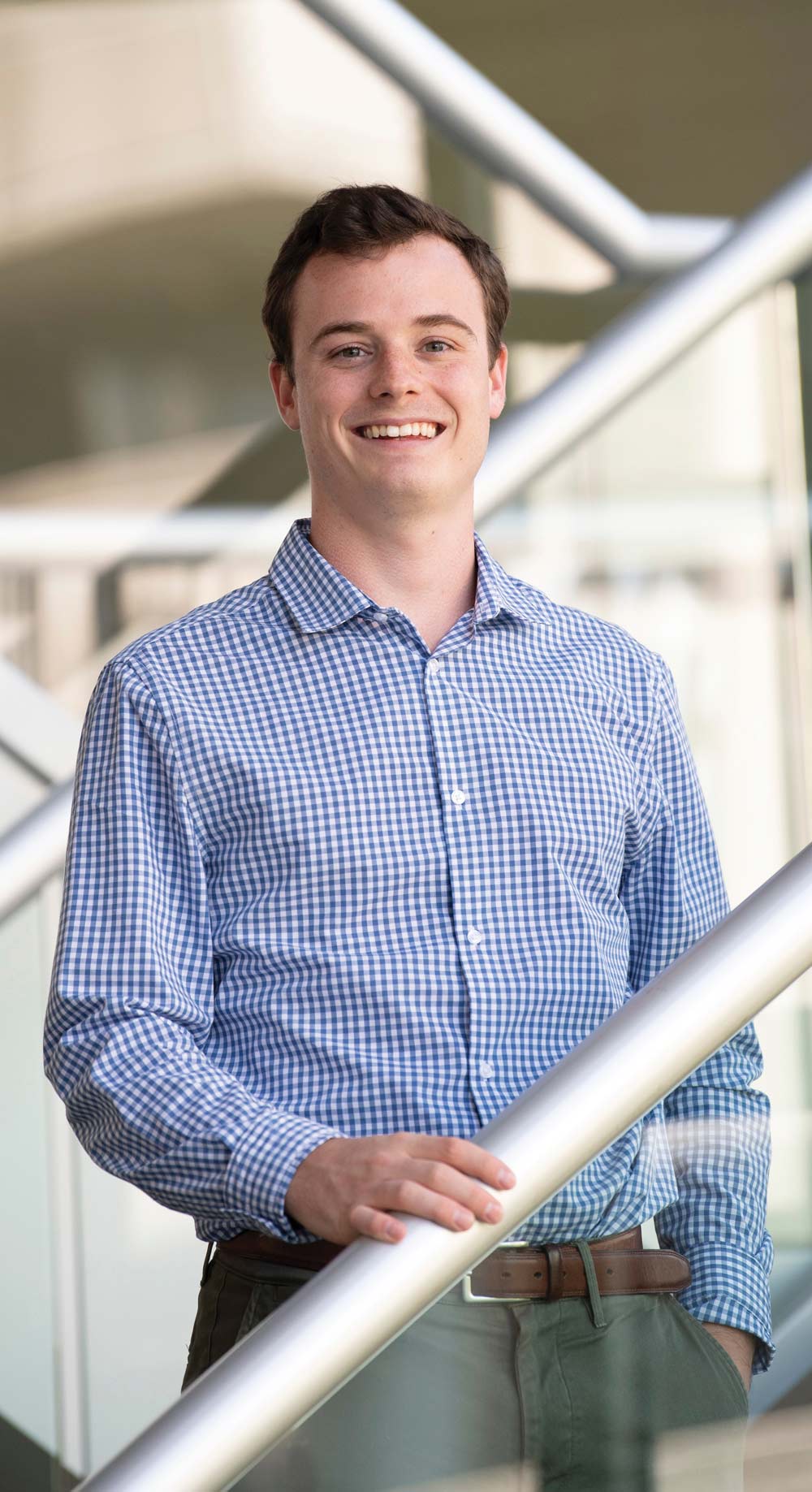
Politico Path
Sure, there’s a reason it’s called “the swamp,” but D.C., he says, is a place where passionate young people can make a difference in the world and have fun in the process.
Coming out of Bucknell, Dowdall landed a job at Politico, a relatively new media outlet that’s become an insider’s indispensable guide to what’s really going on in Congress and the White House. He credits fellow Bucknell alumni with helping him get his foot in the door there.
Tradition
Coming to Bucknell, Kehrli originally thought she’d major in education, but she’d long had an interest in politics, too. “My family was always talking about it. Every Thanksgiving dinner there were heated discussions,” she says. “I was always watching the news.
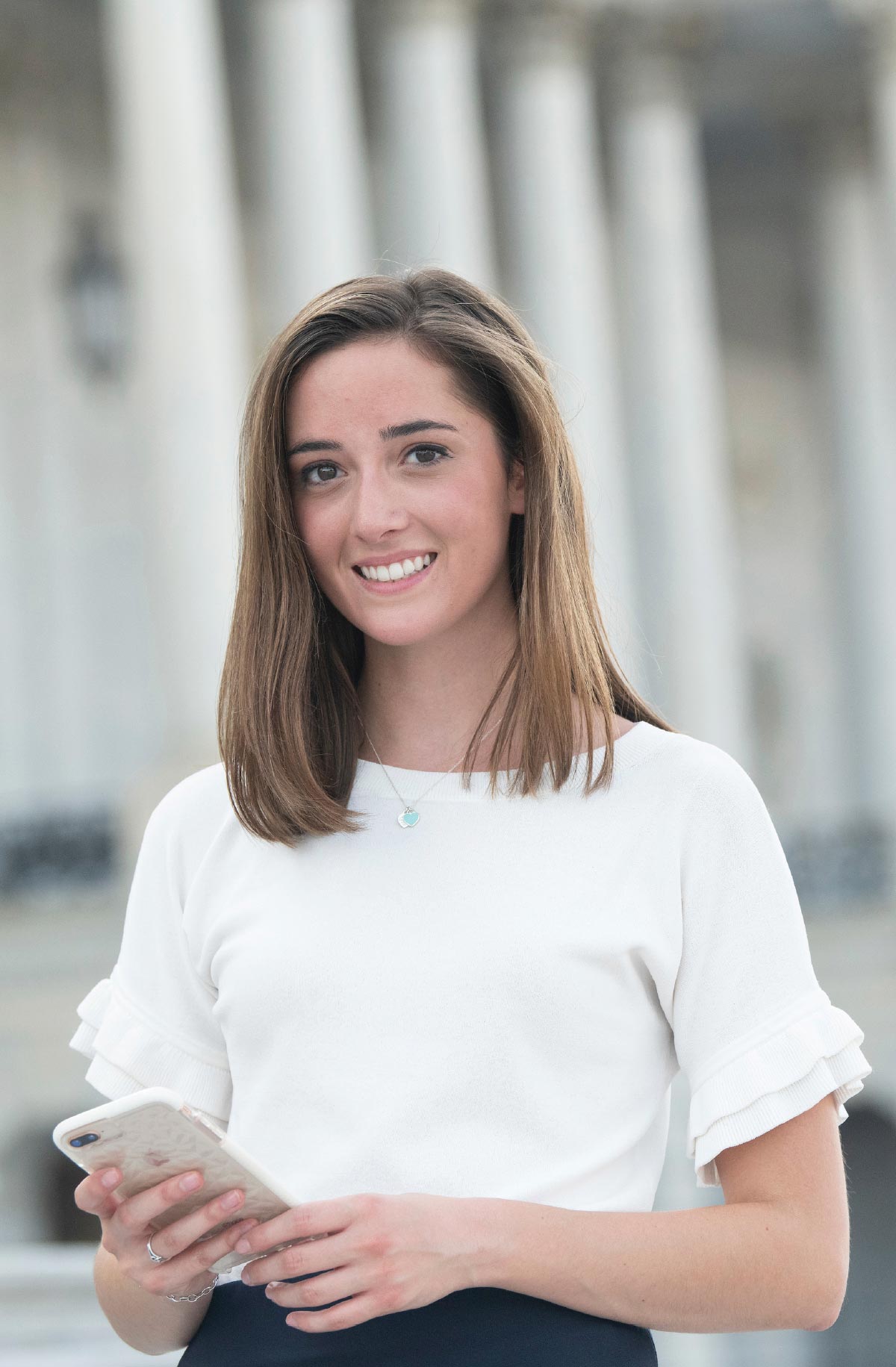

Tradition
Coming to Bucknell, Kehrli originally thought she’d major in education, but she’d long had an interest in politics, too. “My family was always talking about it. Every Thanksgiving dinner there were heated discussions,” she says. “I was always watching the news.

Experiment’
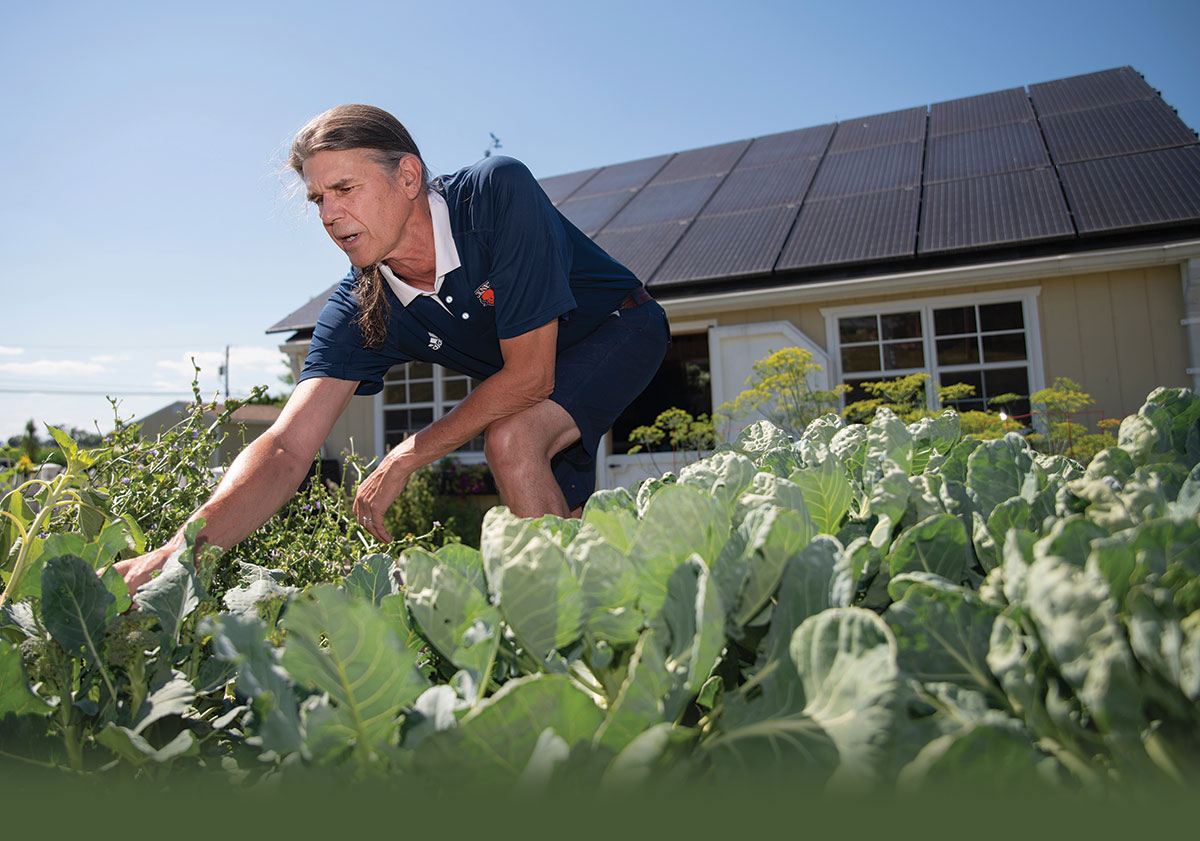

Experiment’
hen electrical engineering professor Peter Jansson moved to Lewisburg five years ago and went house hunting with his wife, Megan, there were a few idiosyncratic items on their must-have list: a clear southern exposure and the ability to clock the hours of sunlight the house gets before buying. An environmentalist to the core, Jansson saw in his new abode an opportunity for solar-powered sustainable living that he’d long awaited but couldn’t execute at his last home, which was surrounded by beautiful but sun-obscuring trees.
At a glance, the 12-year-old, four-bedroom two-story a mile from campus that the Janssons settled into doesn’t scream sustainable homestead. At a little over 3,000 square feet, its ambiance is a bit more McMansion than hobbit home. But it contains a high-tech secret — a power system that’s rarely been built at the residential level. With the opportunity he’d long awaited finally in sight, Jansson didn’t just slap his 24-panel, six-kilowatt solar array on a roof and call it a day; he made his home into its own microelectrical grid — a safe and self-sustaining system that generates and distributes its own power — as well as a teaching and research station for what just might be the future of sustainable living.

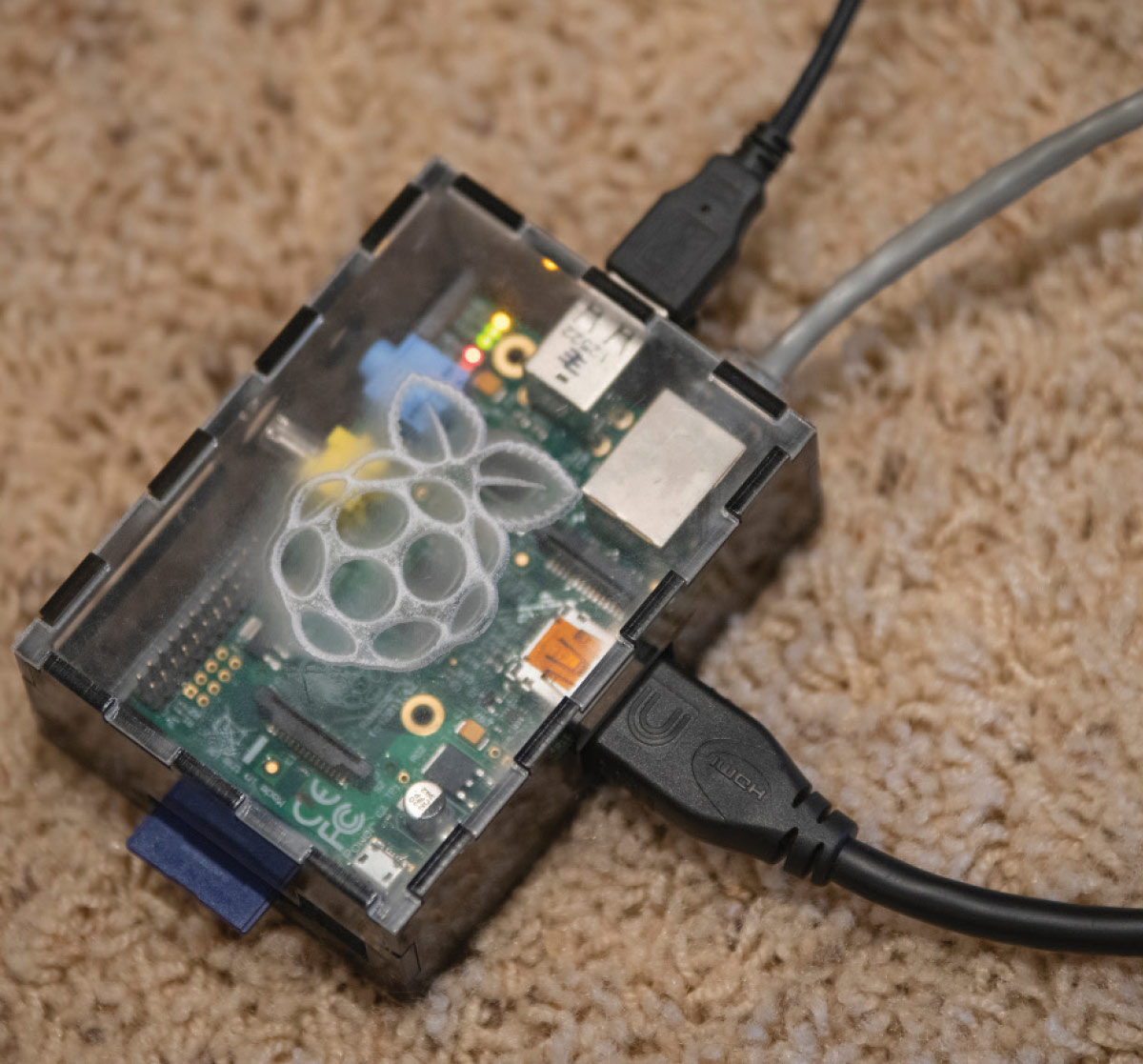
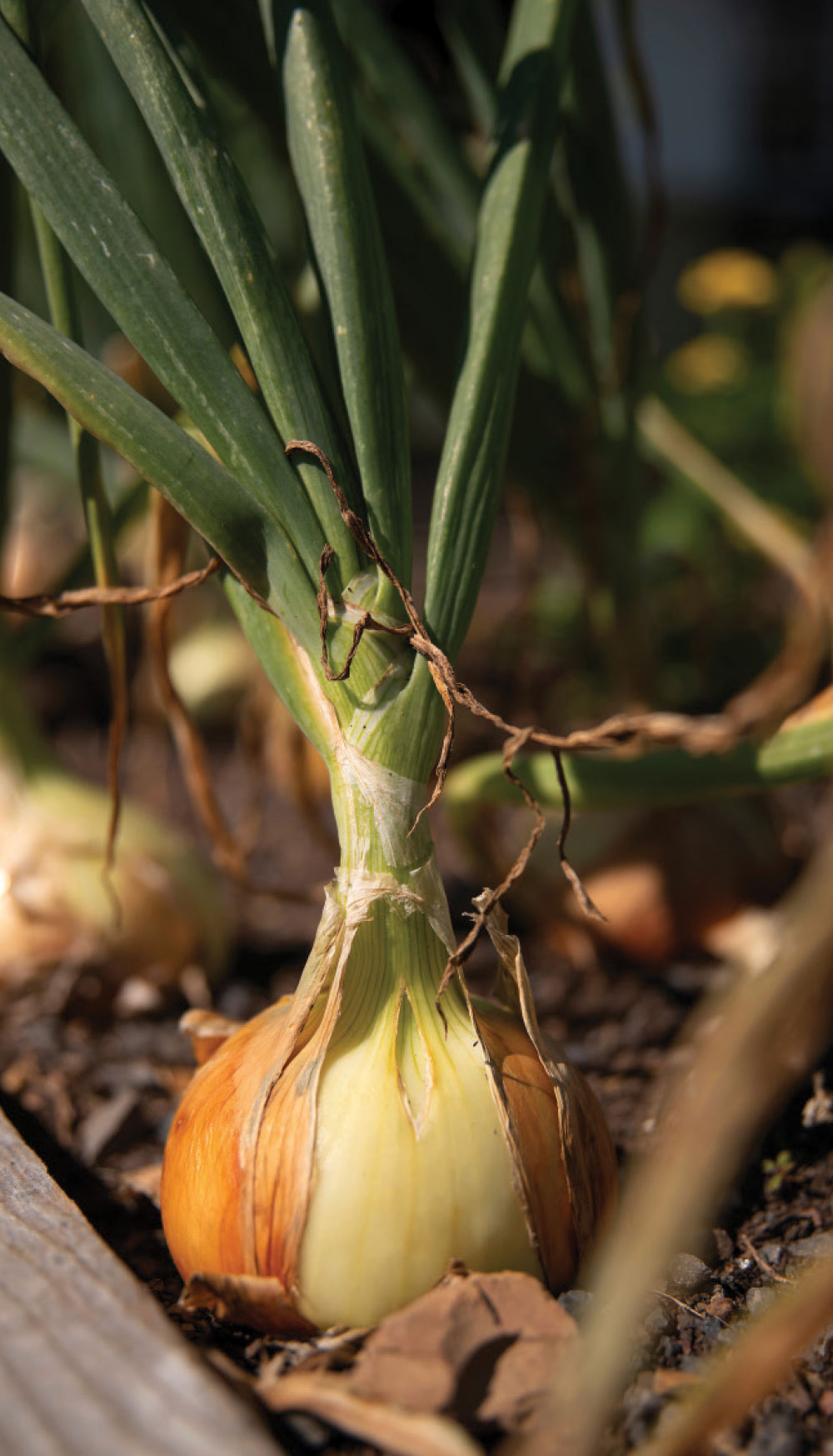

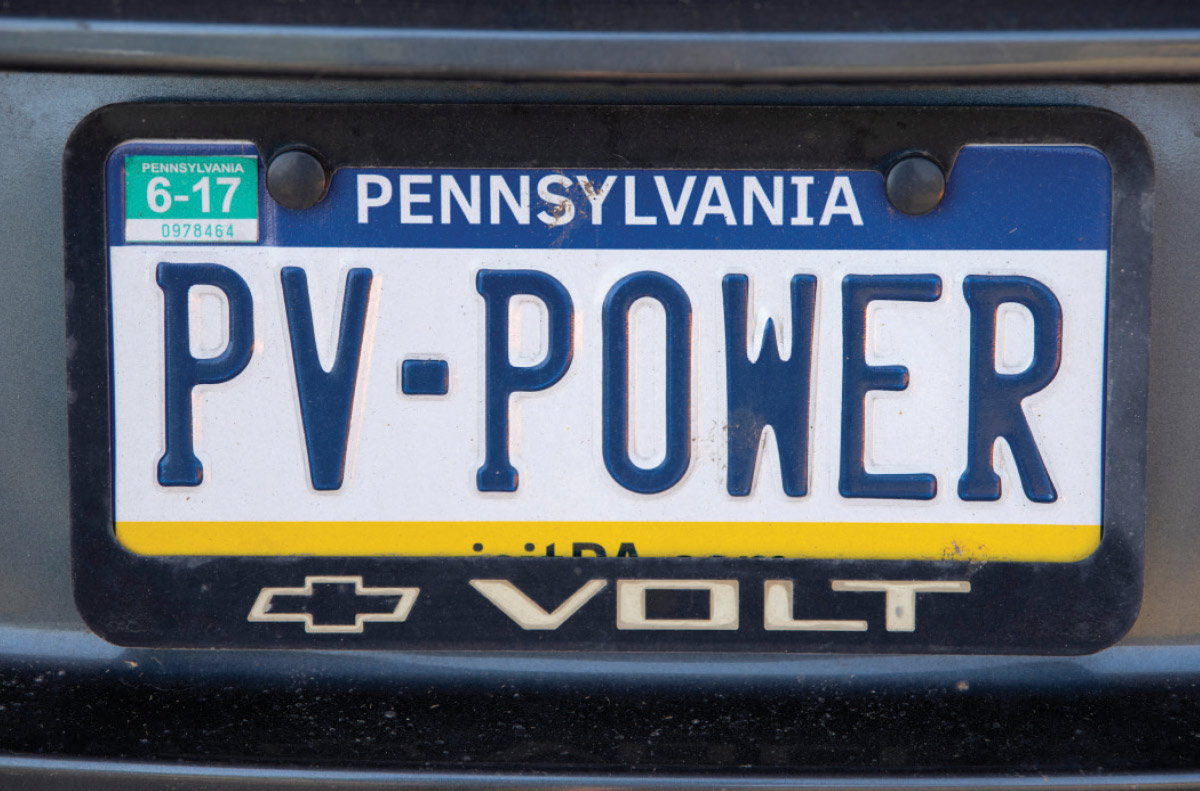

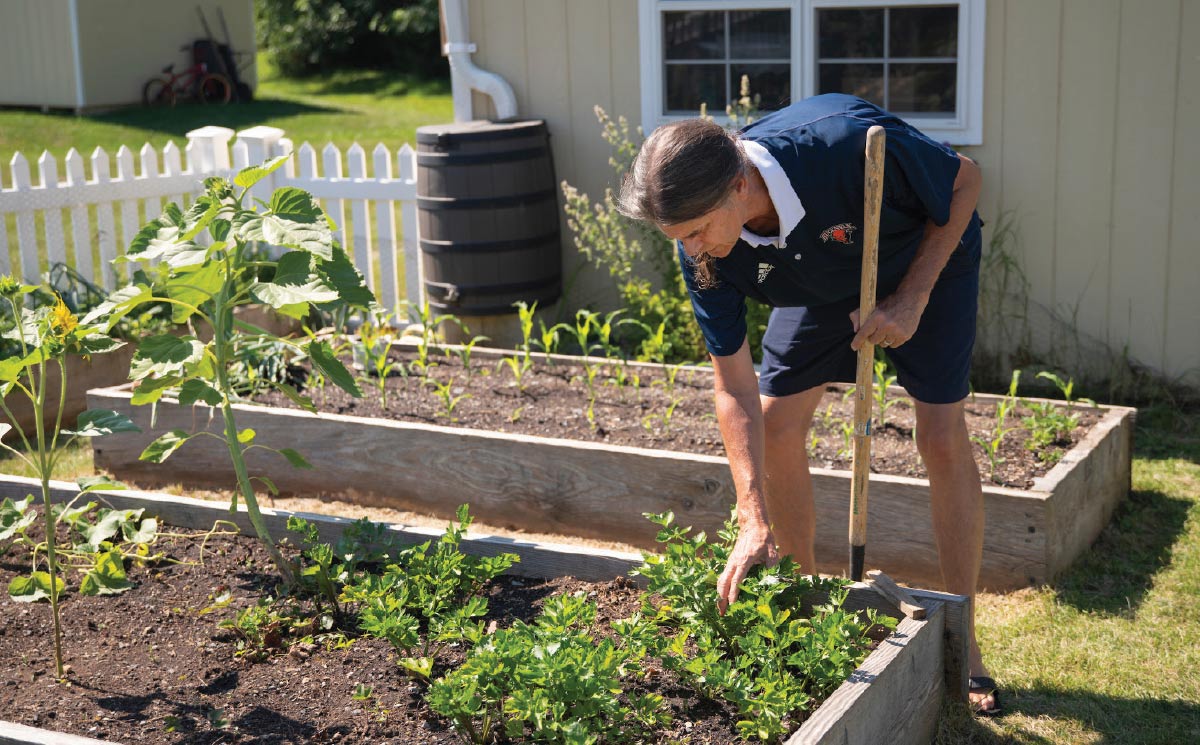
Left: Jansson modeled his raised planters on those in the Lewisburg Community Garden.
Below, right: A smart meter monitors power consumption data and transmits it to the internet.
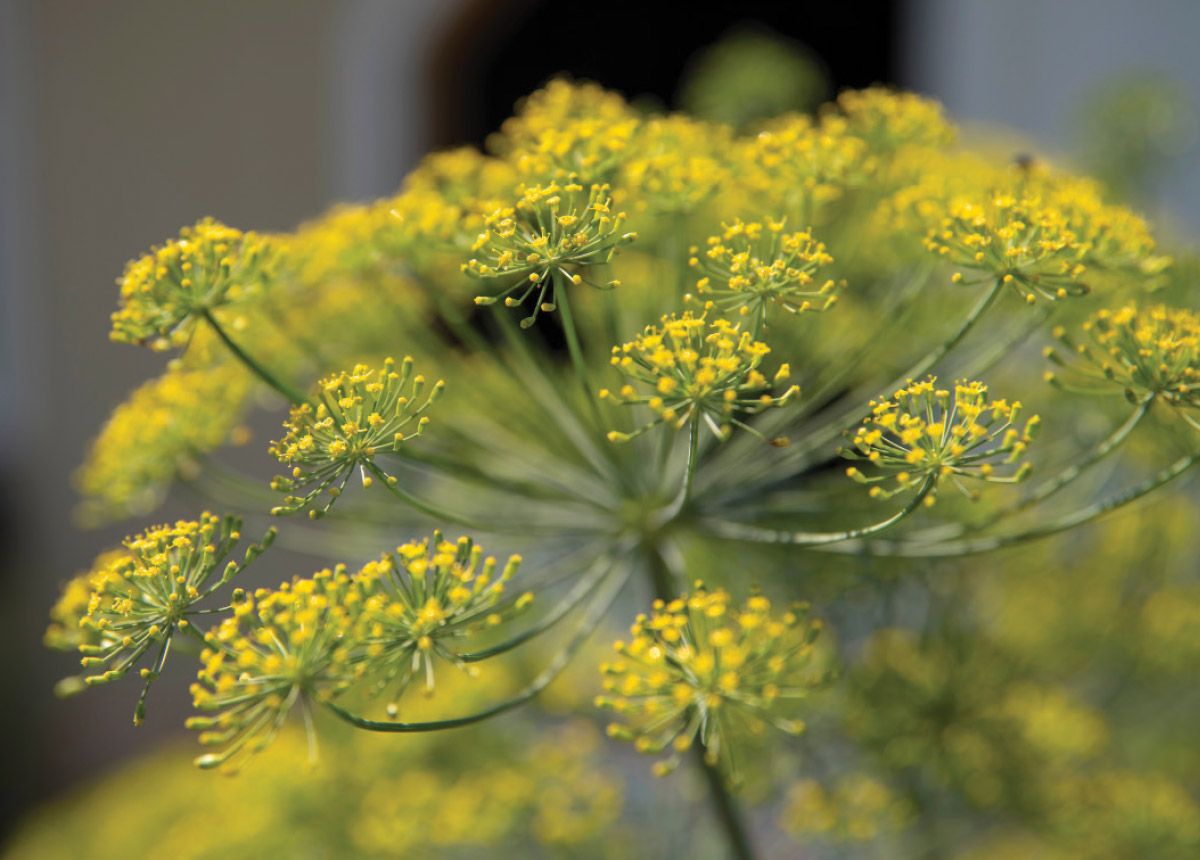









Bottom: Jansson modeled his raised planters on those in the Lewisburg Community Garden.



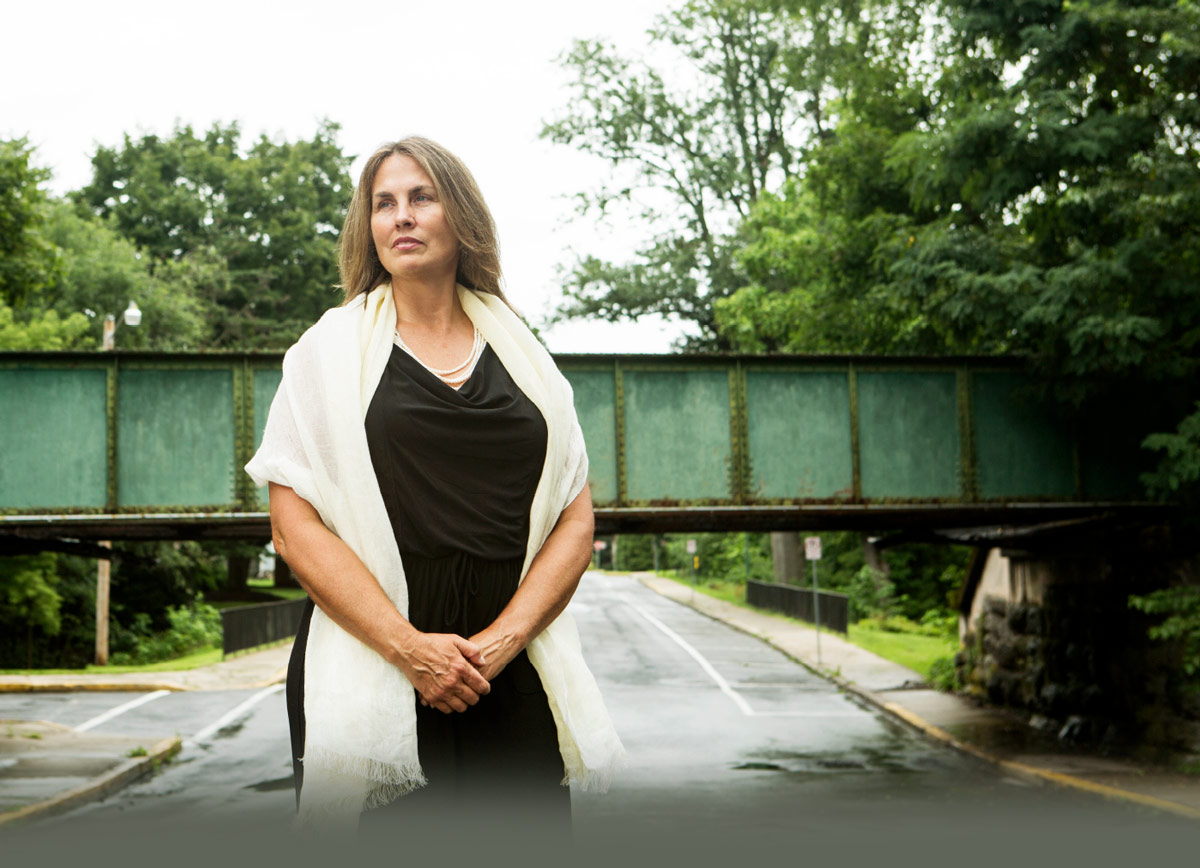
Then she changed again, earning a Ph.D. in neuroscience and transforming into an internationally noted addictions researcher. And she laughs about another drastic lifestyle change that came at 38, when she married a man with two sons and became a first-time mother a year later.
Although the role of addiction in Grisel’s life has dramatically changed, it remains her focus. In her youth, she was beholden to a habit that no longer brought the highs it once did and now promised to kill her, given enough time. So with the unbridled tenacity common in addicts, Grisel earned a Ph.D. in neuroscience to figure out a way to keep using drugs without addiction — a goal she today calls both arrogant and ignorant.
Grisel was supposed to replicate in mice the pain-relieving effects of earlier research, but her results were inconsistent. A breakthrough occurred when she broke the results down by sex: The drug eased pain in male mice, but in female mice, the drug actually intensified pain.
“It was a profound difference,” Grisel says. The drug’s effect worked on “a very basic mechanism, so I can see why [the drug company] thought it would work the same in women and men.”
In a frank commentary published May 25 in The Washington Post, Grisel opened with her own adolescent experience with marijuana.
Her overarching message cautioned against oversimplifying marijuana’s effects on the brain, particularly on adolescents’ developing brains. She called for scientific examination so sound decisions are made regarding legalization. Doing so, she struck a nerve where she least expected it.
“I woke to over 100 emails from kids 12, 13, 17 years old — with no idea what was going on,” she says. “The Post had reformatted it and put it on a feed for young people. It was really surprising — they were the most heartfelt, honest, sad emails I’ve gotten.”



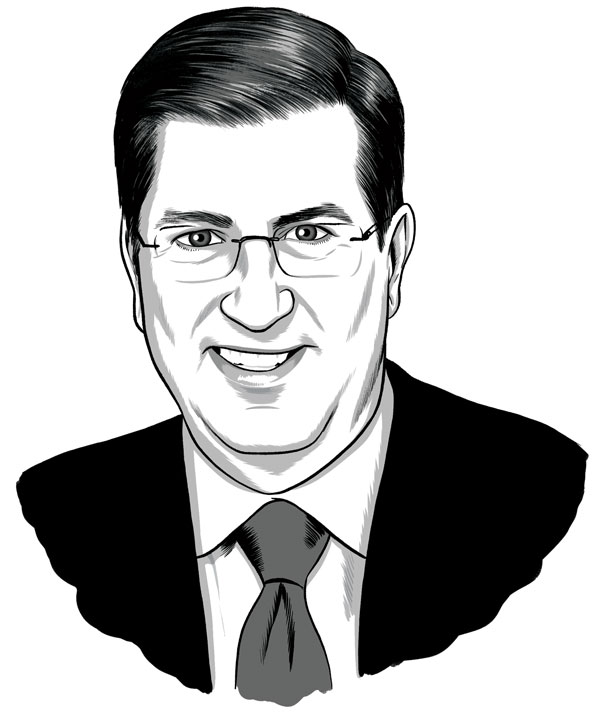
We’re making steady progress toward gaining a higher institutional profile and elevating our reputation. In just the past year, Bucknell has appeared in nearly 3,300 print and online stories in all 50 states and in 88 international publications representing three countries. That includes the nation’s most noteworthy media outlets, such as The New York Times, The Washington Post, The Wall Street Journal, USA Today, NPR, Time and Newsweek. News outlets have featured our faculty members nearly 300 times and students almost 400 times.

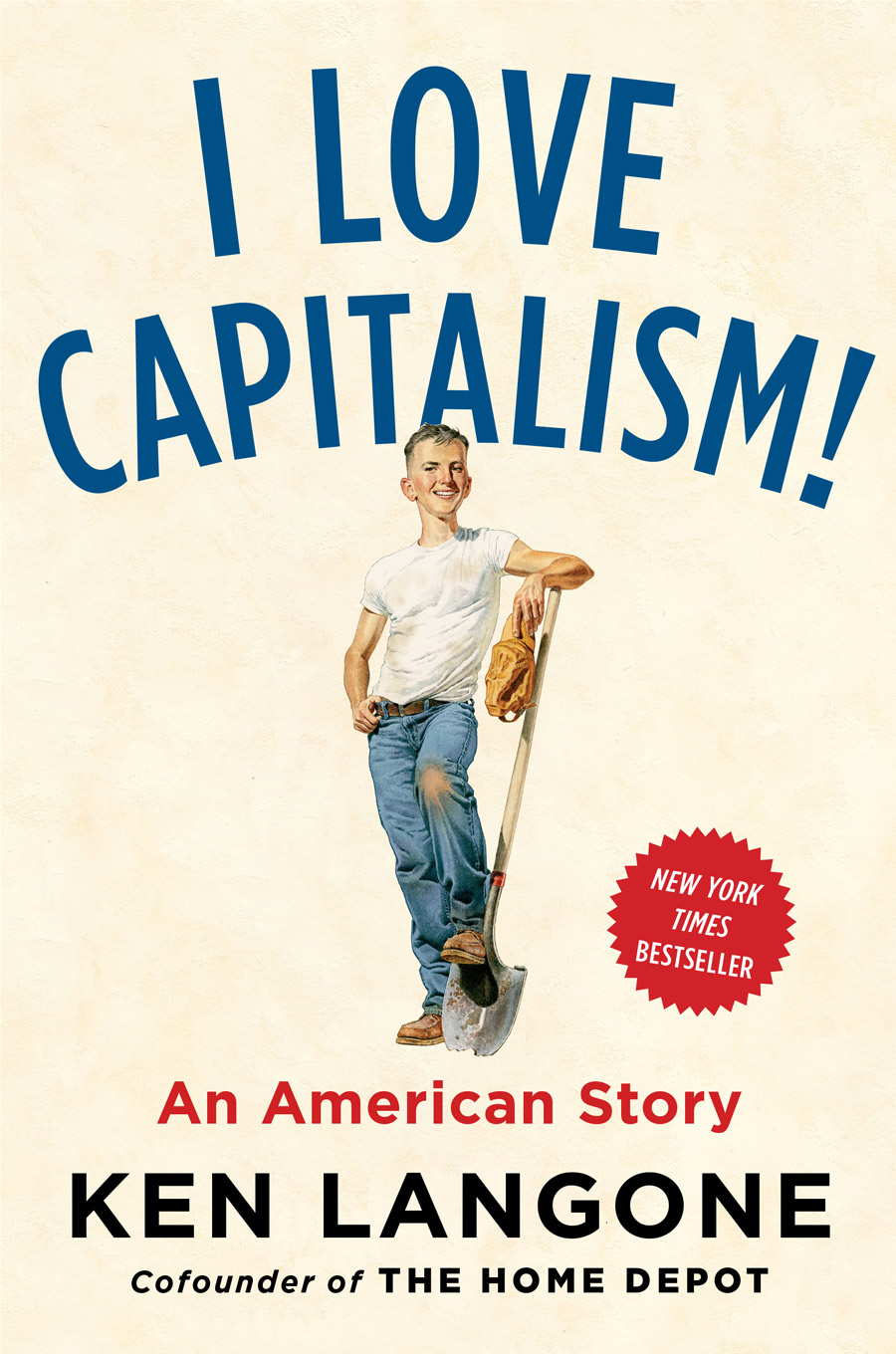
The cover of Ken Langone’s book depicts him as a blue-collar teenager.
a Second Chance
through music
After her death, LaRue decided that he wanted to give back to other patients and families by playing music at the same hospice. The only problem was that he couldn’t play an instrument or read music. He had almost given up when he stumbled upon a store that sold Native American flutes.
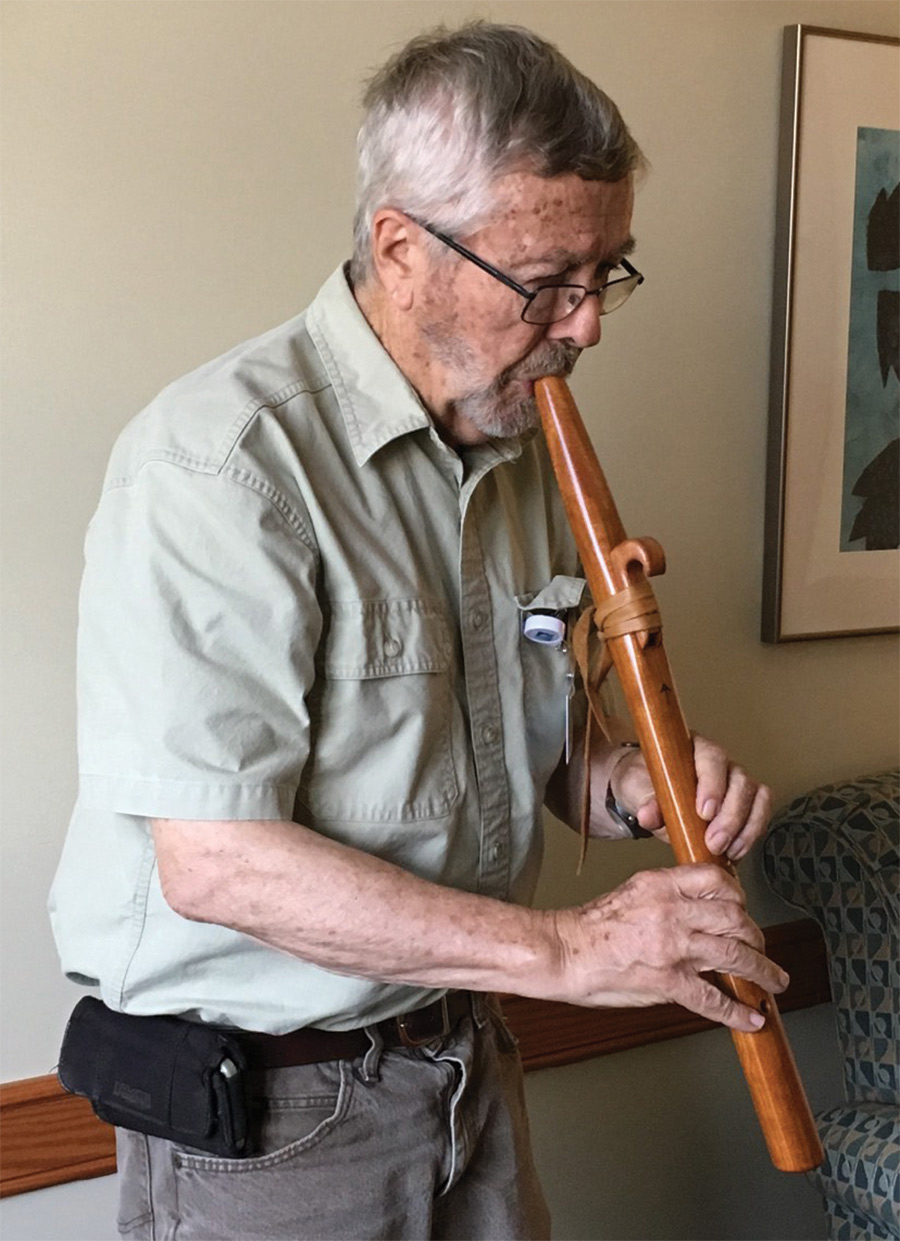
Wagner, a Latin major at Bucknell, did not set out to make a career in zoo education and conservation — those fields barely existed in the 1970s, when she was a high-school Latin teacher and began volunteering as a docent at the Philadelphia Zoo. Eventually, she was hired to help found the zoo’s education department. For more than 30 years, Wagner held several titles at the Philadelphia Zoo, including head of education, visitor services, global conservation, and even fundraising and development. Her office overlooked the zebra and giraffe enclosures. “I had the best office in the zoo,” Wagner says.
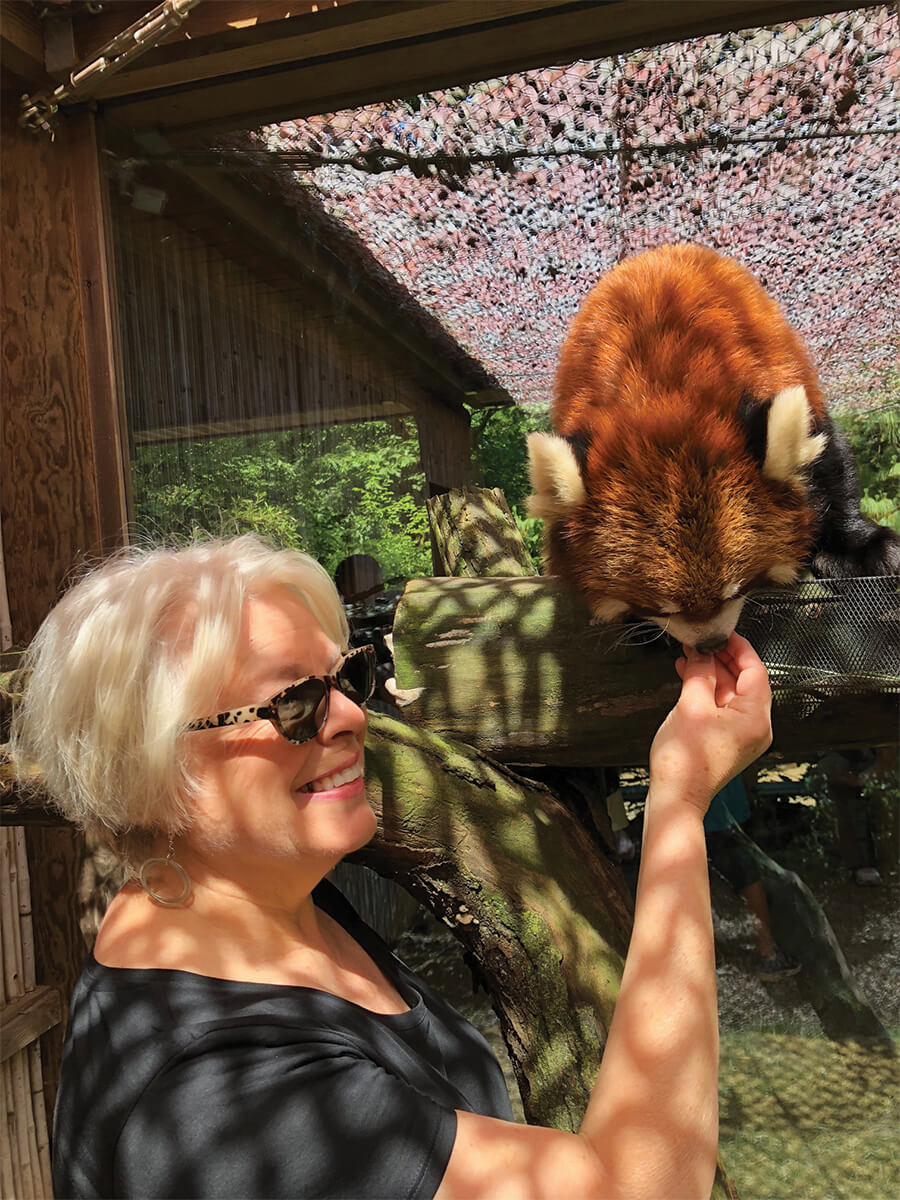
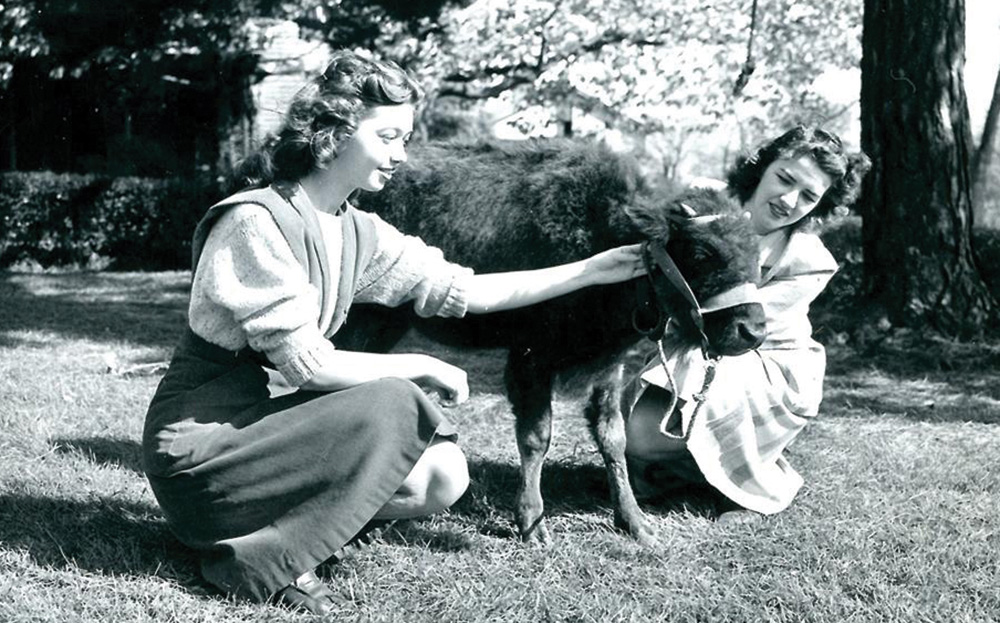

I spent the next 25 years caring for patients in the United States and Germany as well as in Bosnia and other hotspots, where my training in austere and disaster medicine paid off. One memorable role was as commander of the Pentagon’s 200-personnel medical clinic on Sept. 11, 2001.
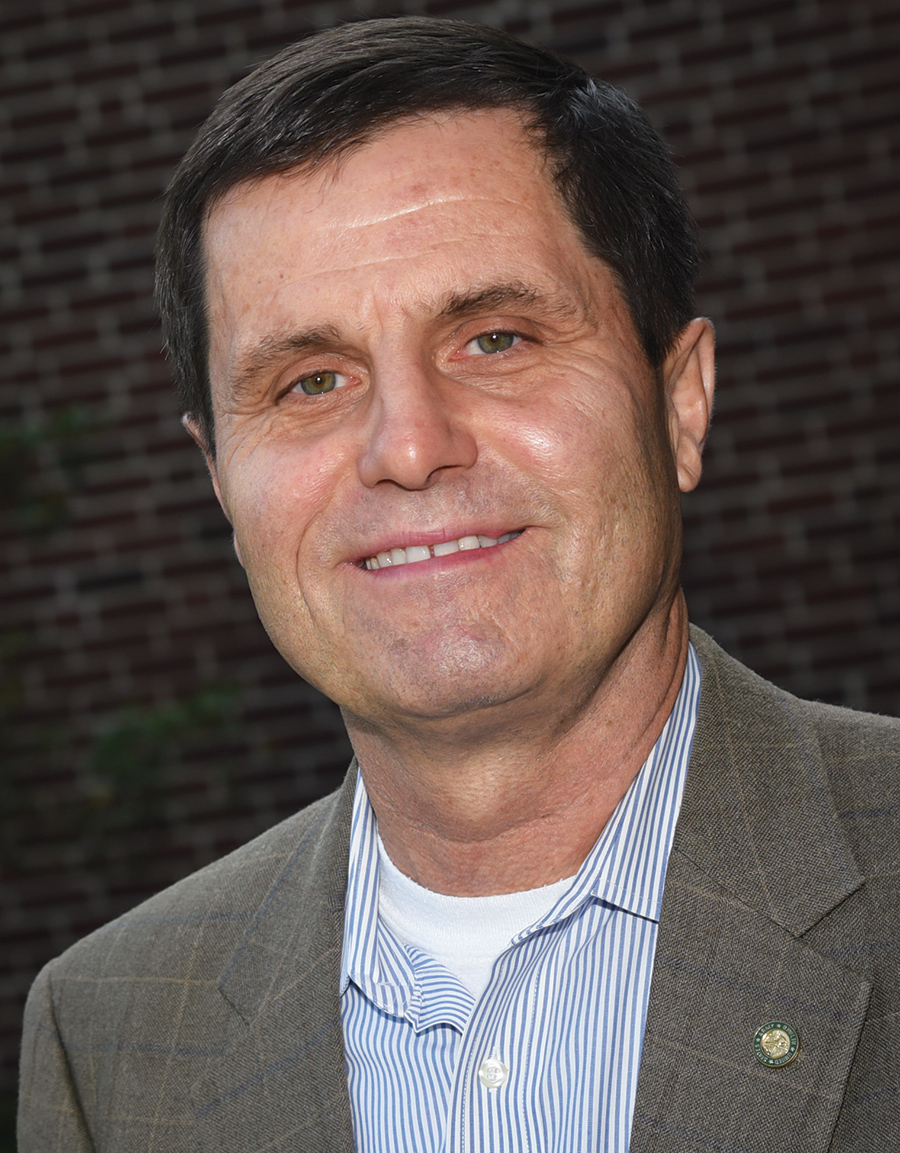
When Kenny Jenkins ’82 was an acclaimed running back at Bucknell, all he thought about was graduating on time and getting a good job.
“At no point [at Bucknell] did I think the NFL was in play, but then I got a chance to go to the Philadelphia Eagles’ training camp, and I thought, ‘Why not? At least I can always say I was there’, ” says Jenkins, a member of Bucknell’s Athletics Hall of Fame.
Jenkins, still living in his hometown, Washington, D.C., is a senior adviser at NFP, the fourth largest privately held insurance brokerage in the world. He relished his five years playing for the Eagles, Lions and Redskins but knew that NFL stands for “Not for Long.”
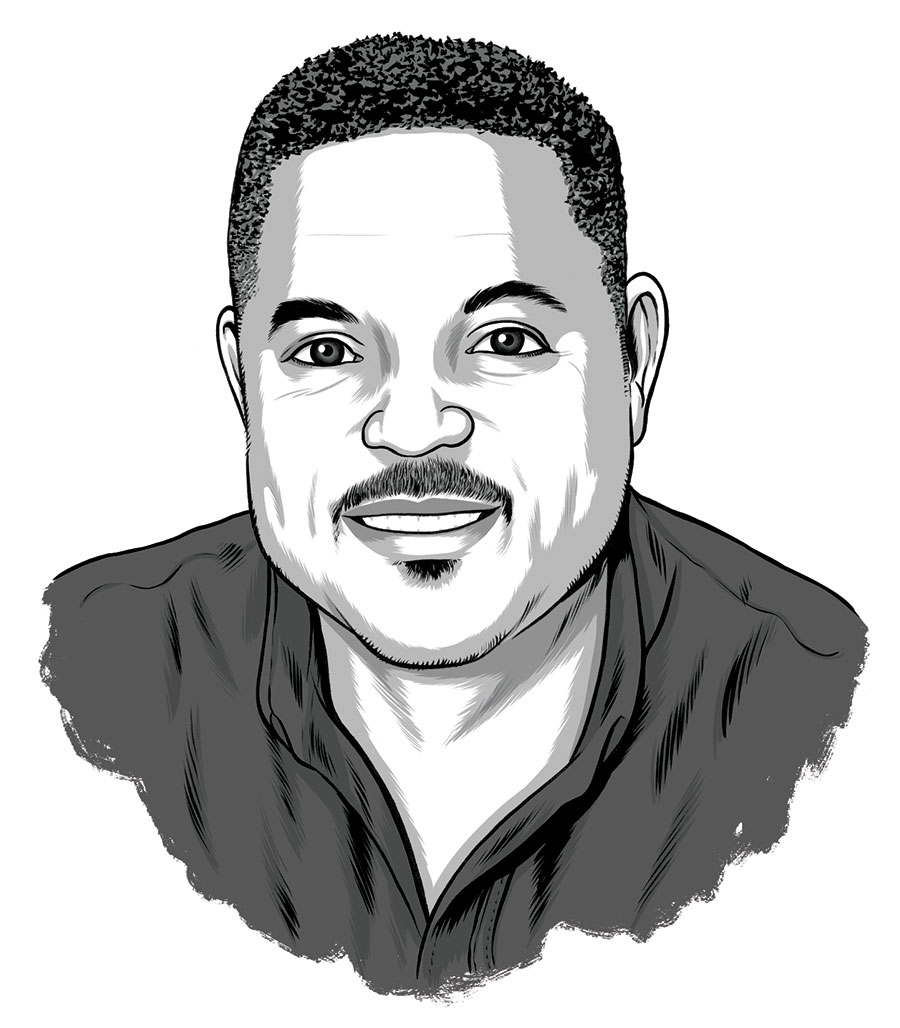
William Bandes M’58
Scott ’89 and Coleen Brighton
Roger ’68 and Marilee Shepler Cole ’68
Mark ’72 and Barbara DeWitt
James and Penny Rich Dorschel ’67
William and Rosemary Krenz
David ’68 and Kathryn Wood McCorkle ’69
John Goldman ’76 and Elizabeth Walton
Susan Penecale Zolla ’68
William Bandes M’58
Scott ’89 and Coleen Brighton
Roger ’68 and Marilee Shepler Cole ’68
Mark ’72 and Barbara DeWitt
James and Penny Rich Dorschel ’67
David and Brenda O’Boyle Griego ’88
William and Rosemary Krenz
David ’68 and Kathryn Wood McCorkle ’69
John Goldman ’76 and Elizabeth Walton
Susan Penecale Zolla ’68
As a longtime investment banker, Joe Berry ’96 is practiced in the art of deal-making. But in recent years, he’s tested his artistry on a new palette: the big screen.
At London-based Lorton Entertainment, Berry is a partner for the film company whose credits include 10 films, including Supersonic, a documentary about the English rock band Oasis. Two other documentaries in production are Ski Bum: The Warren Miller Story, about the man known for his you-are-there skiing films; and Maradona, an exploration of Argentine soccer star Diego Maradona.
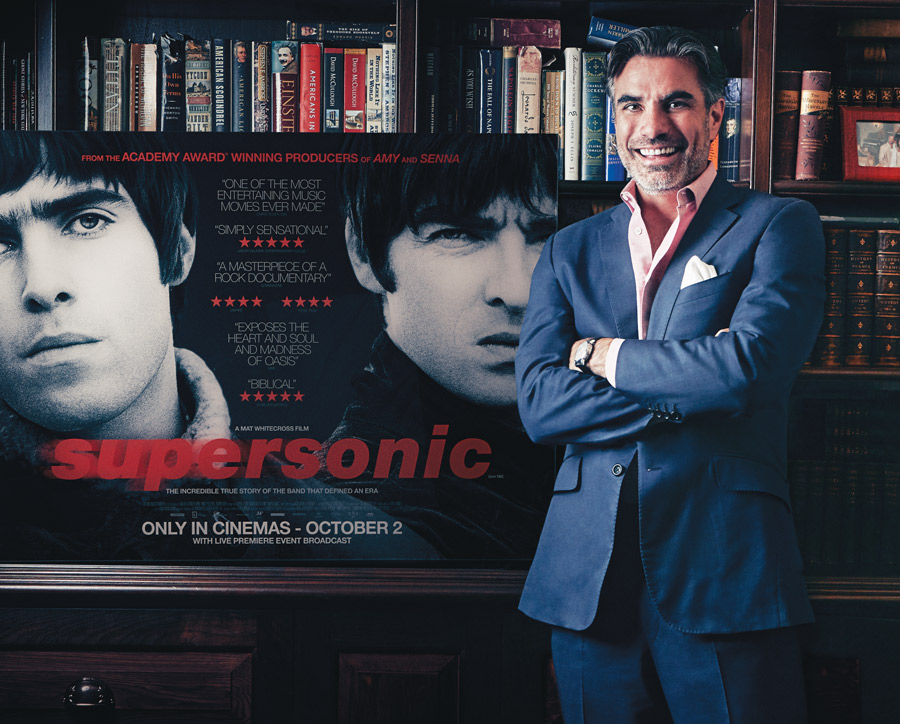


Commencement was an especially emotional day for Amy Yule Cameron ’99. Her mother had died a month earlier, and Cameron says she felt the overwhelming support of the faculty as she walked across the stage to receive her diploma.
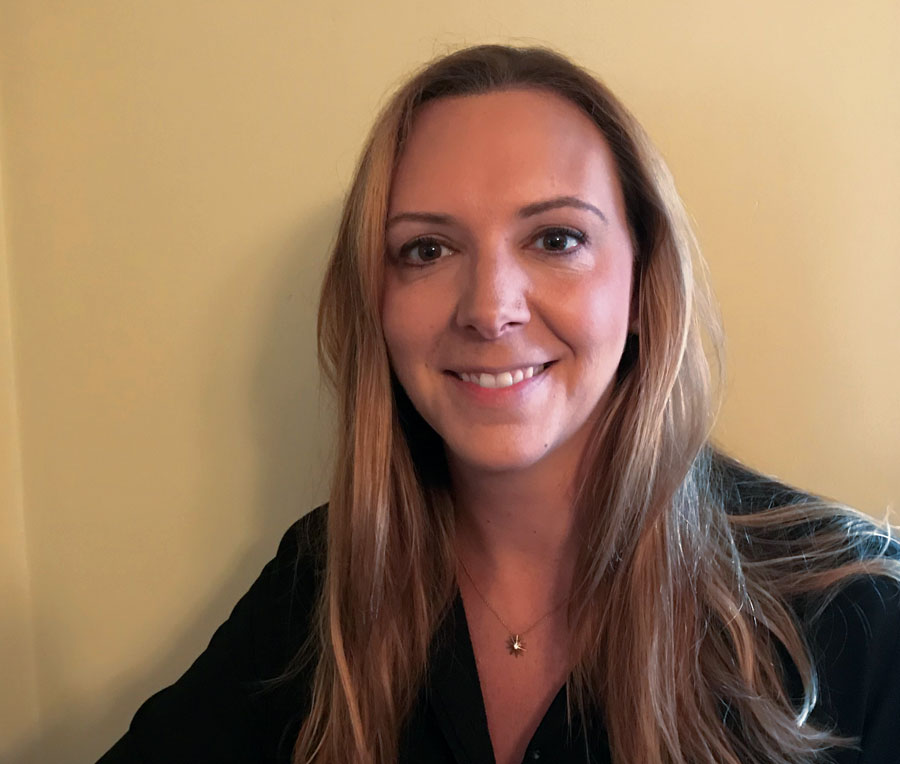
When Emma Sheehy ’17 told people she was majoring in creative writing (with a minor in American politics) she got the rhetorical question, “How will you find a job?”
She quickly answered those skeptics. Since November, she’s been executive assistant to six-time Emmy award-winning Fox News anchor Harris Faulkner.
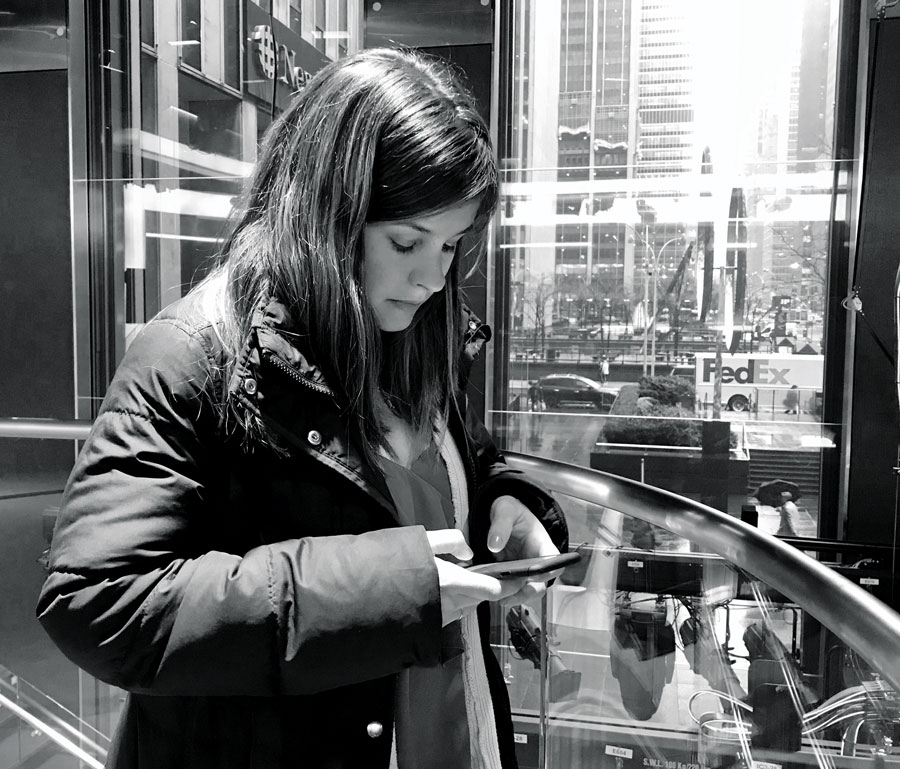
Florence Overton Hunter, June 20, Northport, N.Y.
Constance Dent, May 29, Rockland Township, Pa.
Robert Lauman, June 6, Ephrata, Pa.
Elizabeth Maychark Oltmer, April 28, Oradell, N.J.
Kit Richter Hildick-Smith, April 14, Princeton, N.J.
Jean Newsom Waldner P’69, P’71, April 15, Chapel Hill, N.C.
Joy Wagner Smith, May 2, Milton, Pa.
Robert Sykes P’80, P’84, G’05, G’10, May 6, Rochester, N.Y.
Weston Jenkins, April 3, Ponte Vedra Beach, Fla.
Barbara Minton Gasser Leonard P’74, June 28, Cabot, Pa.

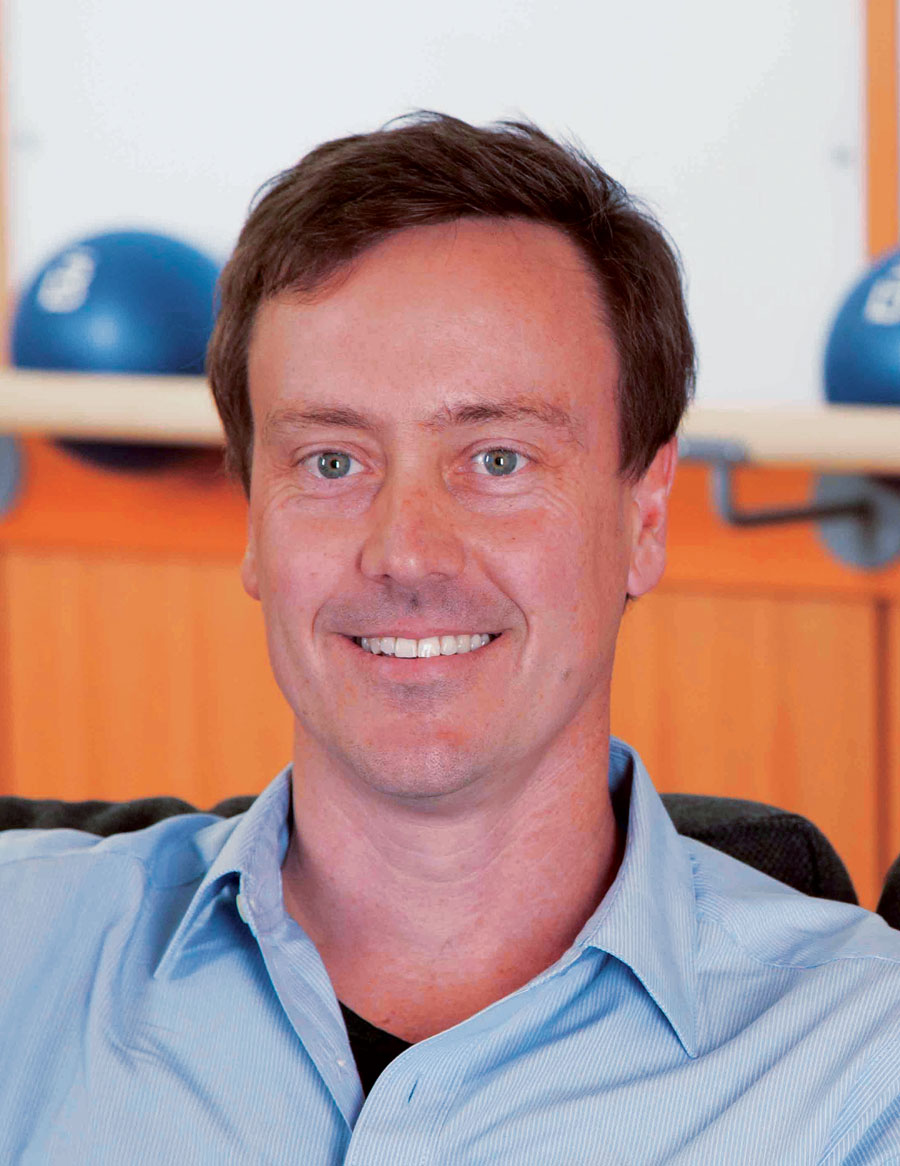
It’s a funny thing for someone in his position to say, but Chris Lincoln ’94, co-founder of a chain of fitness studios with 123 locations, is adamant that he’s not an exercise junkie. And that’s precisely the point. Lincoln says the goal of Barre3, the company he runs with his wife, Sadie, “is to redefine what success in fitness means.”
Barre3’s total-body training method is built on three core principles: isometric holds that resemble yoga poses, small one-inch movements to build strength, and larger dynamic movements for aerobic exercise. The model has resonated with clients. Since its founding in 2008, the Oregon-based company has expanded to locations in 30 states plus Canada and the Philippines, most of them franchises.
Lincoln, the company’s COO, has considered himself an entrepreneur since his college days, when he ran an exterior painting company from his fraternity house.
When Connor Van Hoose ’18 graduated this spring he was presented with two options: Enter the “work-force draft” like so many other recent graduates or enter the Major League Baseball draft. With a political science degree secured, Van Hoose decided to follow his baseball dreams.
On June 5, the Bison pitching ace received the news that so many boys fantasize about the first time they put on a glove: He was to be drafted by the New York Yankees. Van Hoose was selected by perhaps the most iconic and well-known sports franchise in the world.
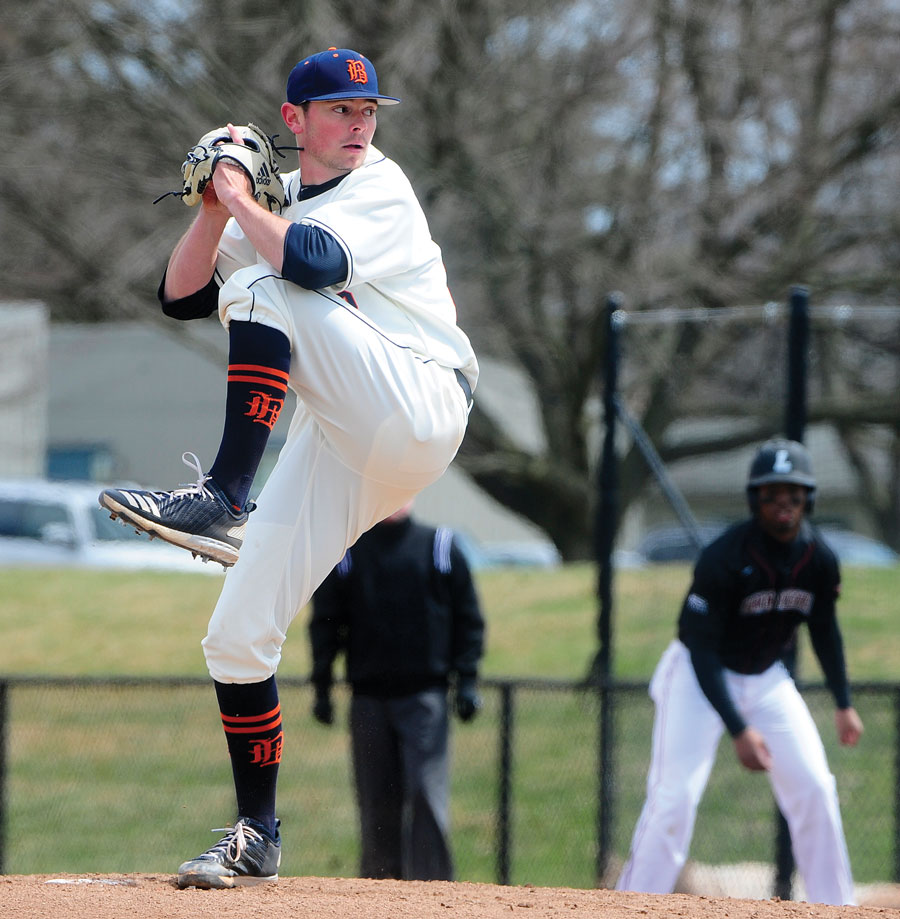
 DIG INTO ANCIENT HISTORY
DIG INTO ANCIENT HISTORY

The Magnet
WHAT’S YOUR BEST BUCKNELL FOOD MEMORY?
FOLLOW US ON FACEBOOK TO SUBMIT YOUR ANSWER
These dedicated alumni gathered from around the country for a once-in-a-lifetime opportunity to ring together again. The group, which included a Bucknell spouse, an incoming first-year student and four guest ringers, offered a showcase concert at the annual Handbell Musicians of America National Seminar under the direction of Professor Emeritus William Payn, music, who spent 32 years teaching and leading the University’s marquee choral and handbell groups.
In just two short days, they prepared a stellar 45-minute concert for seminar attendees that received a standing ovation. Alumni called it a privilege and honor to reunite to make music together. Graduates represented classes from the late 1980s to 2016. They took time off from jobs and family duties, and paid for their travel and sheet music for the opportunity to ring again with Professor Payn. — Hillary Billmyer Marotta ’01
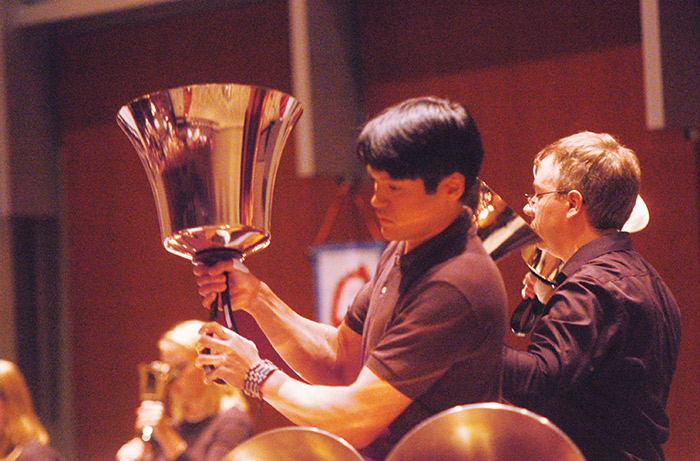
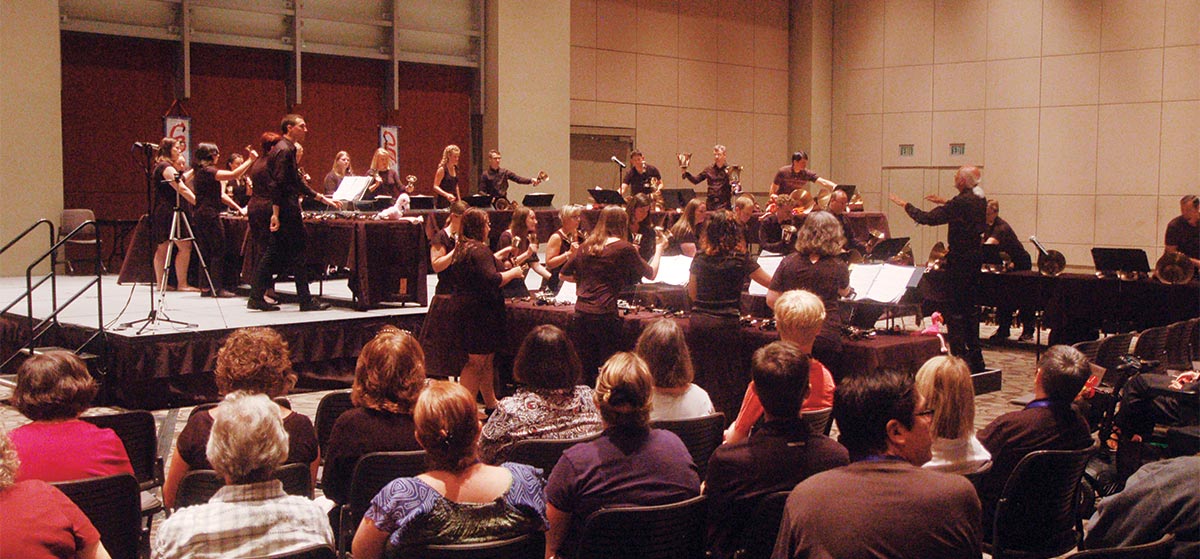

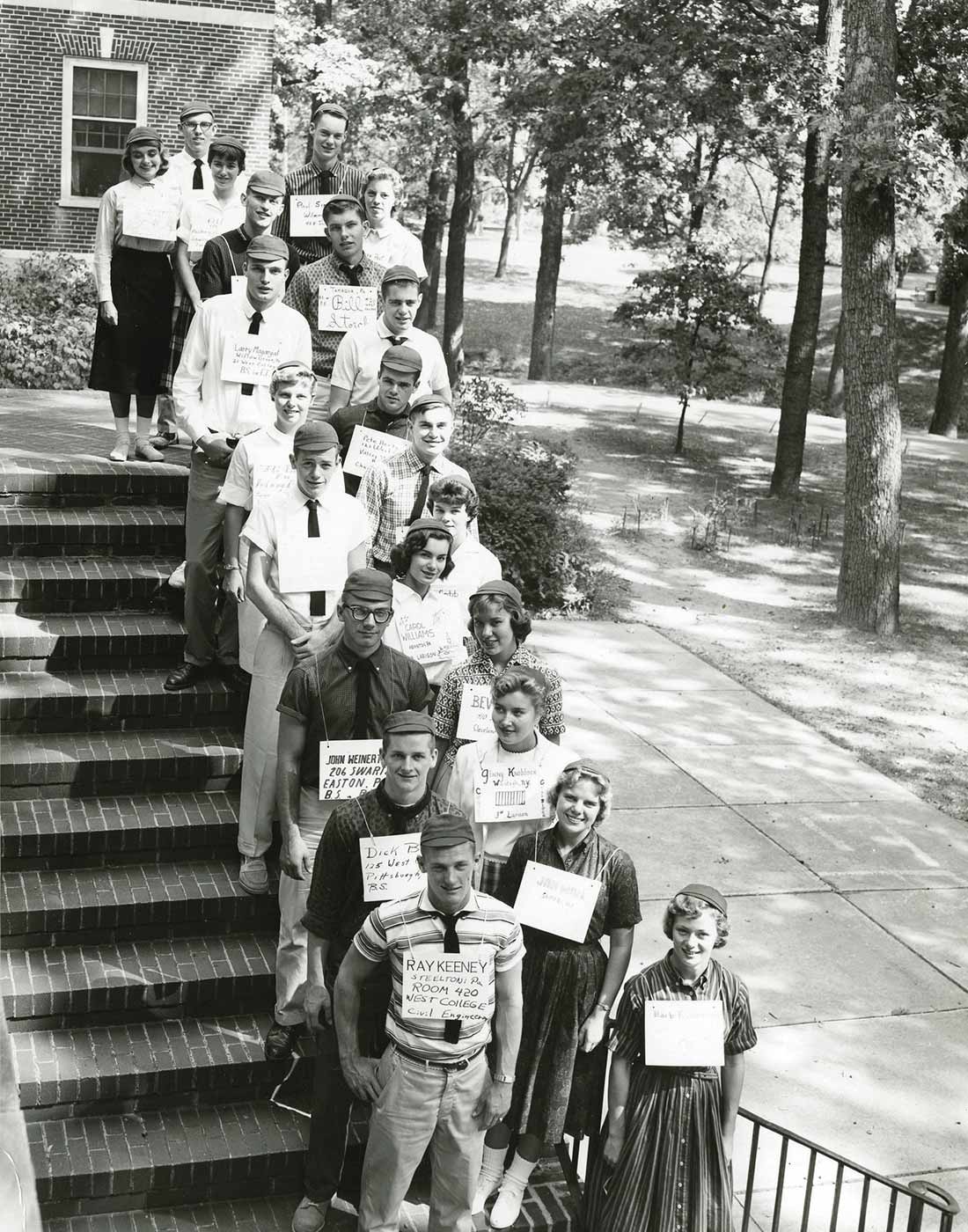
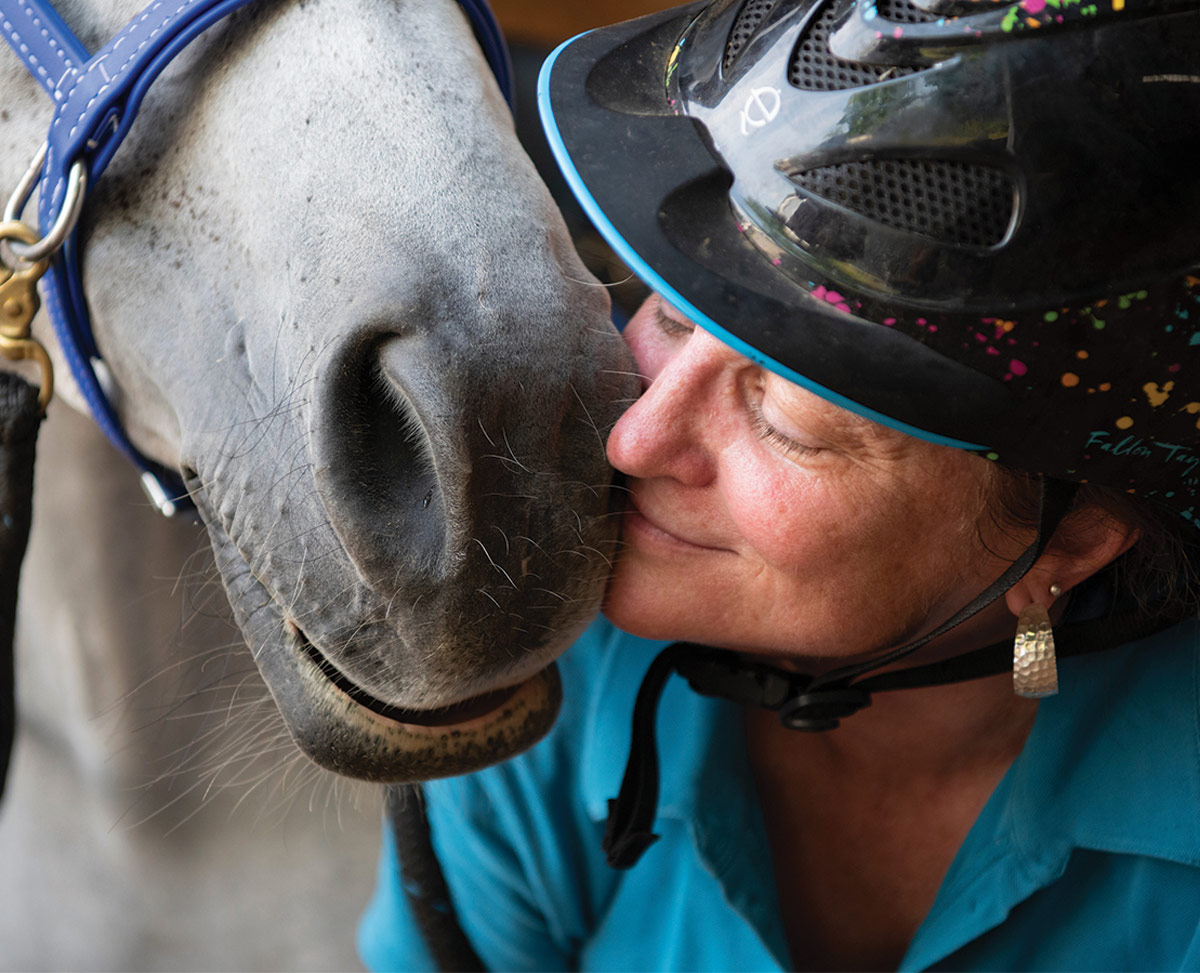


the Arabian mare
 Management professor JAMIE HENDRY has been riding for the last 49 years, training horses for 33 and filling her Milton, Pa., barn with Arabians (and a few assorted rescue horses) since 2009. With nine Arabians and six rescues, she says, “I’m beyond my limit.” She generally favors Crabbet Arabians, descended from English stock, and her current favorite horse is a 15-year-old Crabbet Arabian mare named Rachel.
Management professor JAMIE HENDRY has been riding for the last 49 years, training horses for 33 and filling her Milton, Pa., barn with Arabians (and a few assorted rescue horses) since 2009. With nine Arabians and six rescues, she says, “I’m beyond my limit.” She generally favors Crabbet Arabians, descended from English stock, and her current favorite horse is a 15-year-old Crabbet Arabian mare named Rachel.

 Management professor JAMIE HENDRY has been riding for the last 49 years, training horses for 33 and filling her Milton, Pa., barn with Arabians (and a few assorted rescue horses) since 2009. With nine Arabians and six rescues, she says, “I’m beyond my limit.” She generally favors Crabbet Arabians, descended from English stock, and her current favorite horse is a 15-year-old Crabbet Arabian mare named Rachel.
Management professor JAMIE HENDRY has been riding for the last 49 years, training horses for 33 and filling her Milton, Pa., barn with Arabians (and a few assorted rescue horses) since 2009. With nine Arabians and six rescues, she says, “I’m beyond my limit.” She generally favors Crabbet Arabians, descended from English stock, and her current favorite horse is a 15-year-old Crabbet Arabian mare named Rachel.



